
When speaking with a garden club recently, we spent quite a bit of time discussing how to use blue in the garden.
Whether using blue flowers, foliage, or accents, the topic was lively, as blue seems to be a favorite color among gardeners (right up there with purple and pink!).
So today, I thought I’d share with you some of my favorite sources of blue in the garden and how I use them.
1. Visually cool down a hot garden
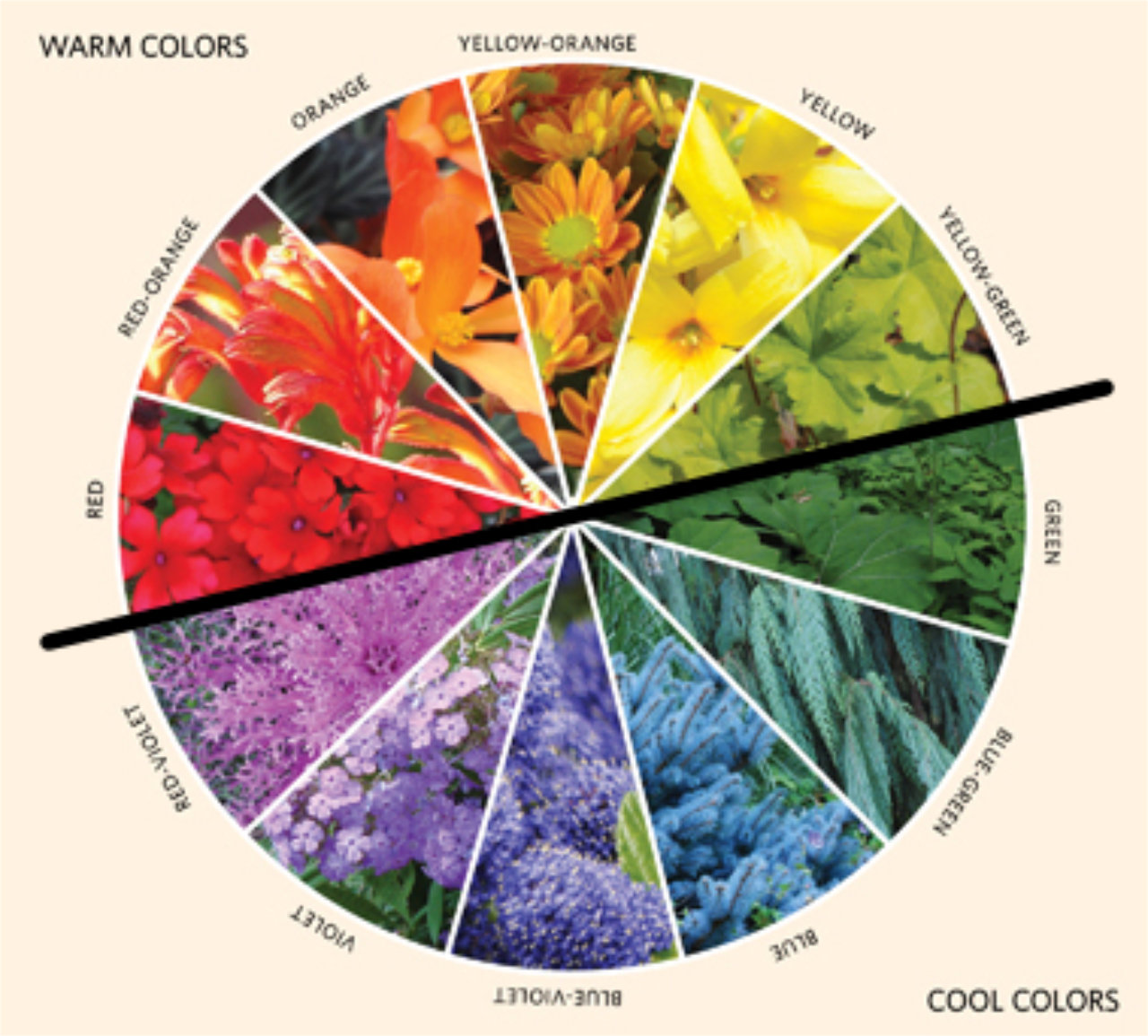
Yes, colors have temperatures! And, seeing as we’ve had one of the hottest summers I can remember, blue is definitely helping to cool down my garden (visually, at least.)
Look at the color wheel and you’ll notice that when divided in half, the colors on one side are cool (green, blue, and purple), while those on the other are warm (yellow, orange, and red.)
So if you want to create an illusion of coolness, focus on using blue colors (along with purples and greens.)
The following three photos were taken where I live, in Granite Bay, which is HOT HOT HOT in the summer.
Through the use of blues, dark greens, and maroons, it visually cools things off just a bit.
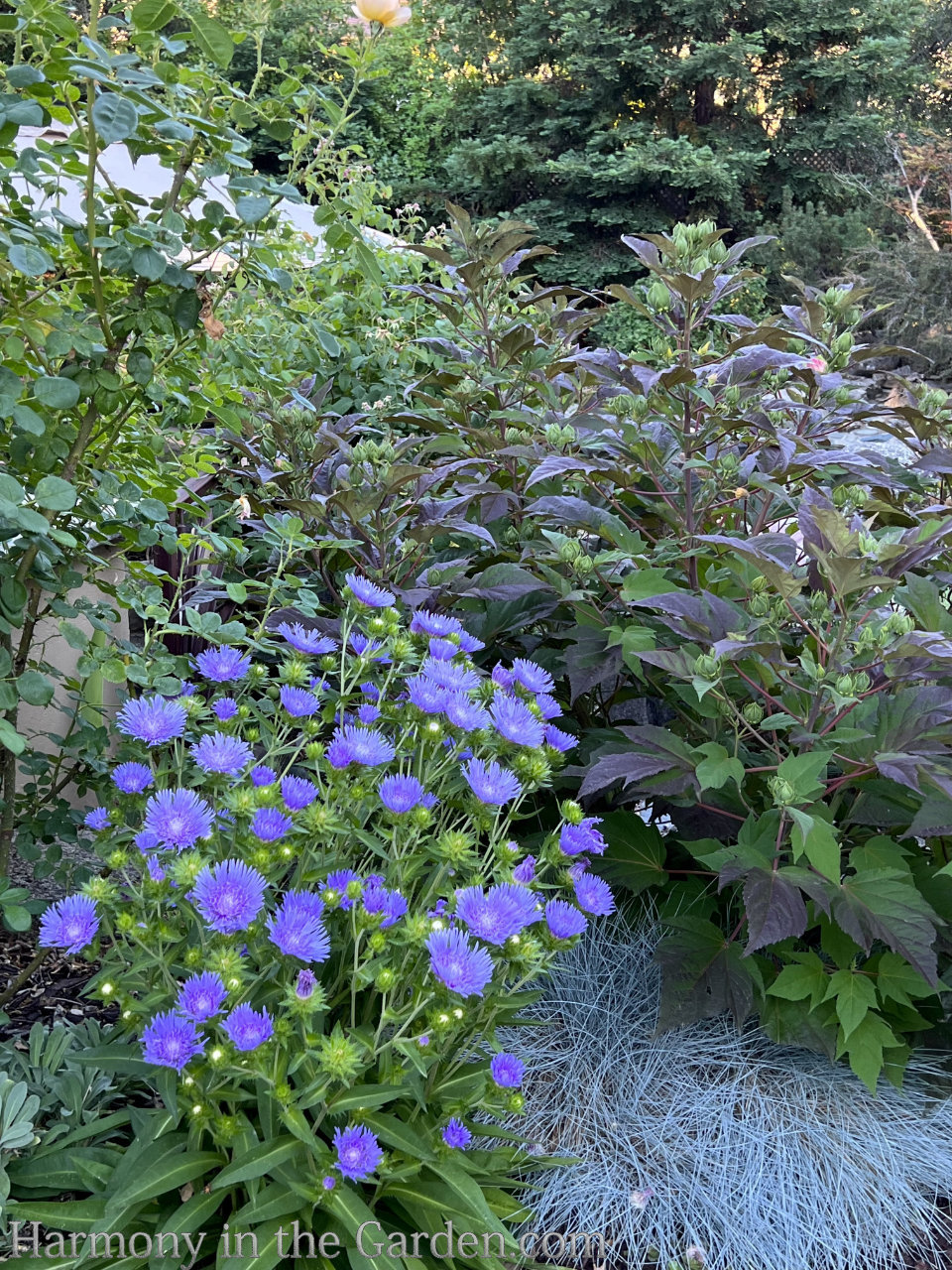
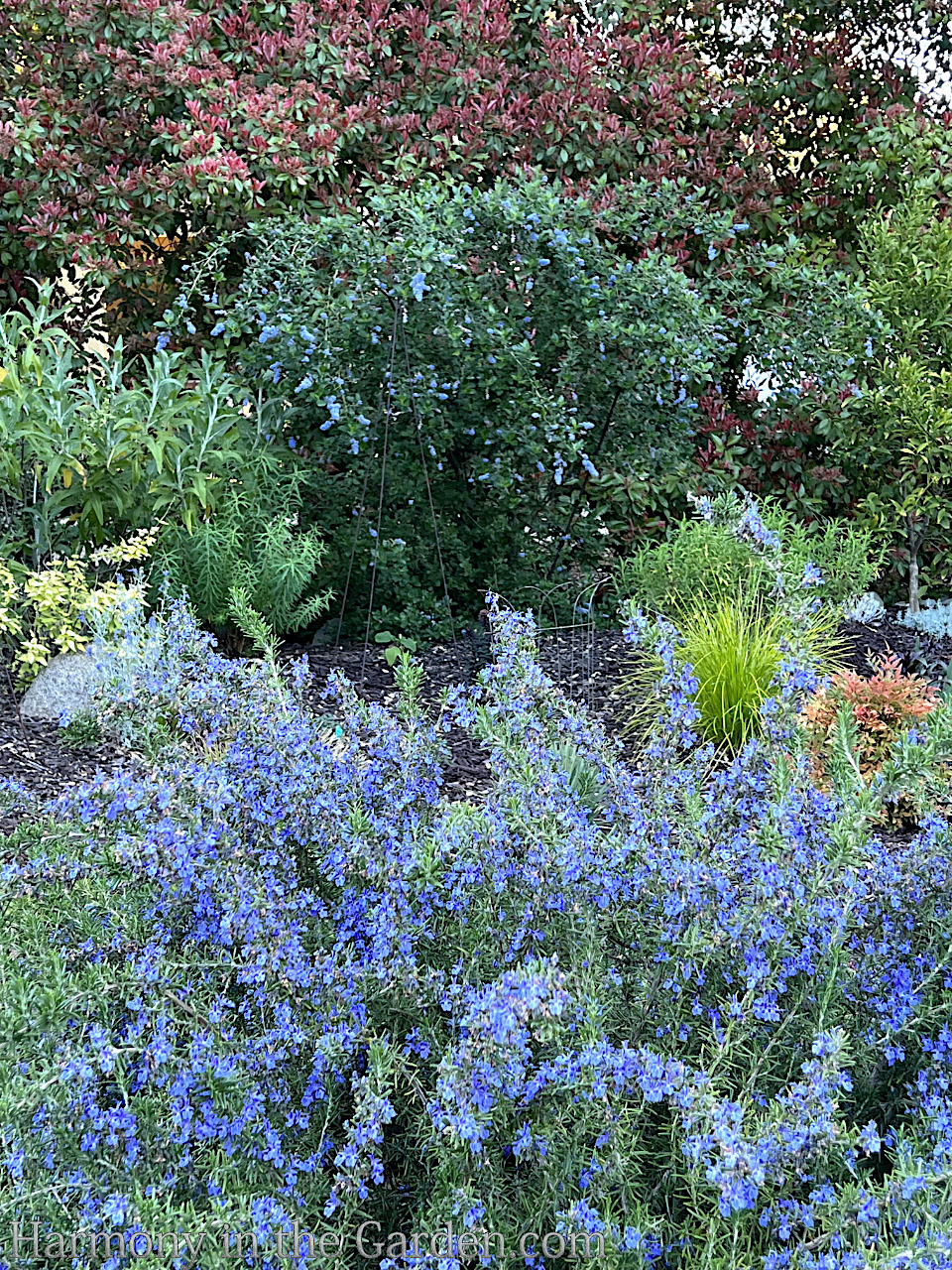
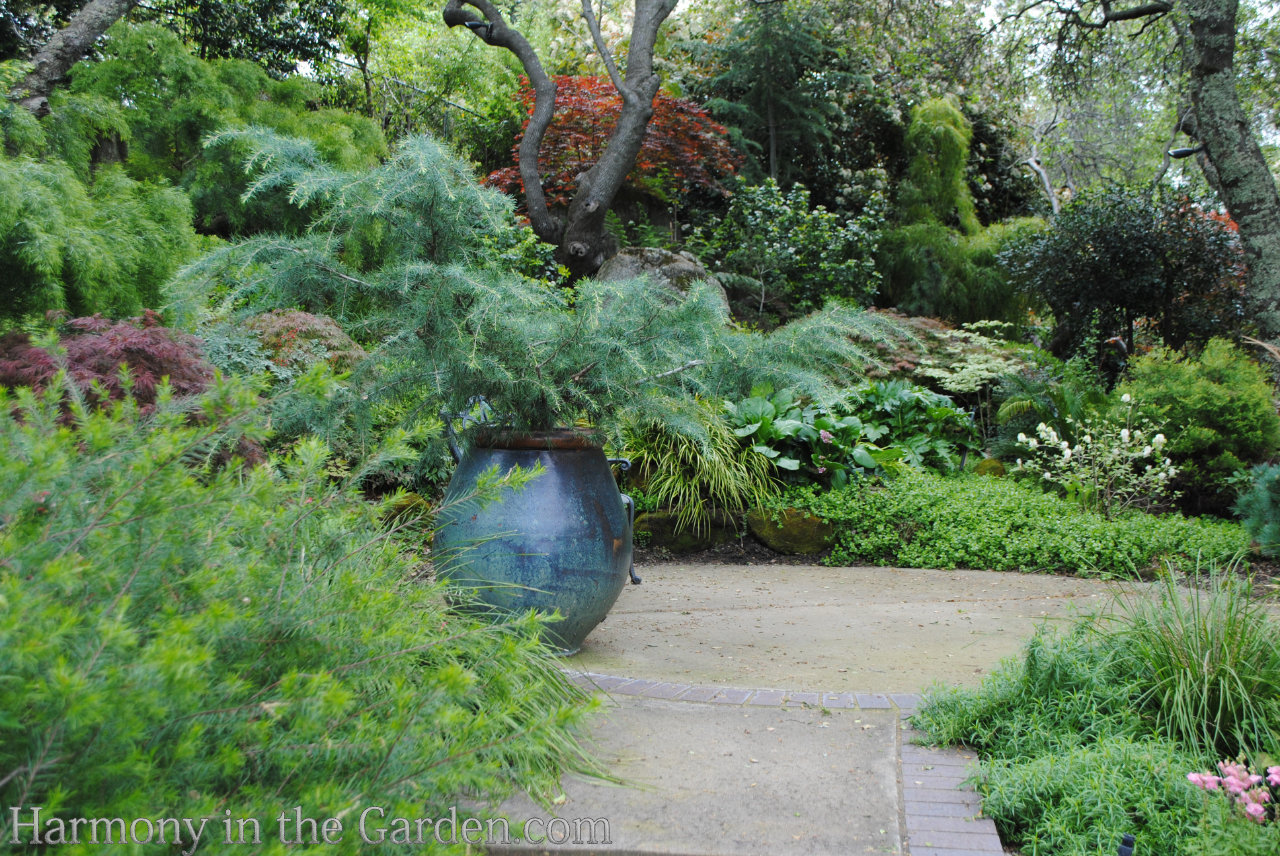
2. Create a lush, calming effect using analogous colors
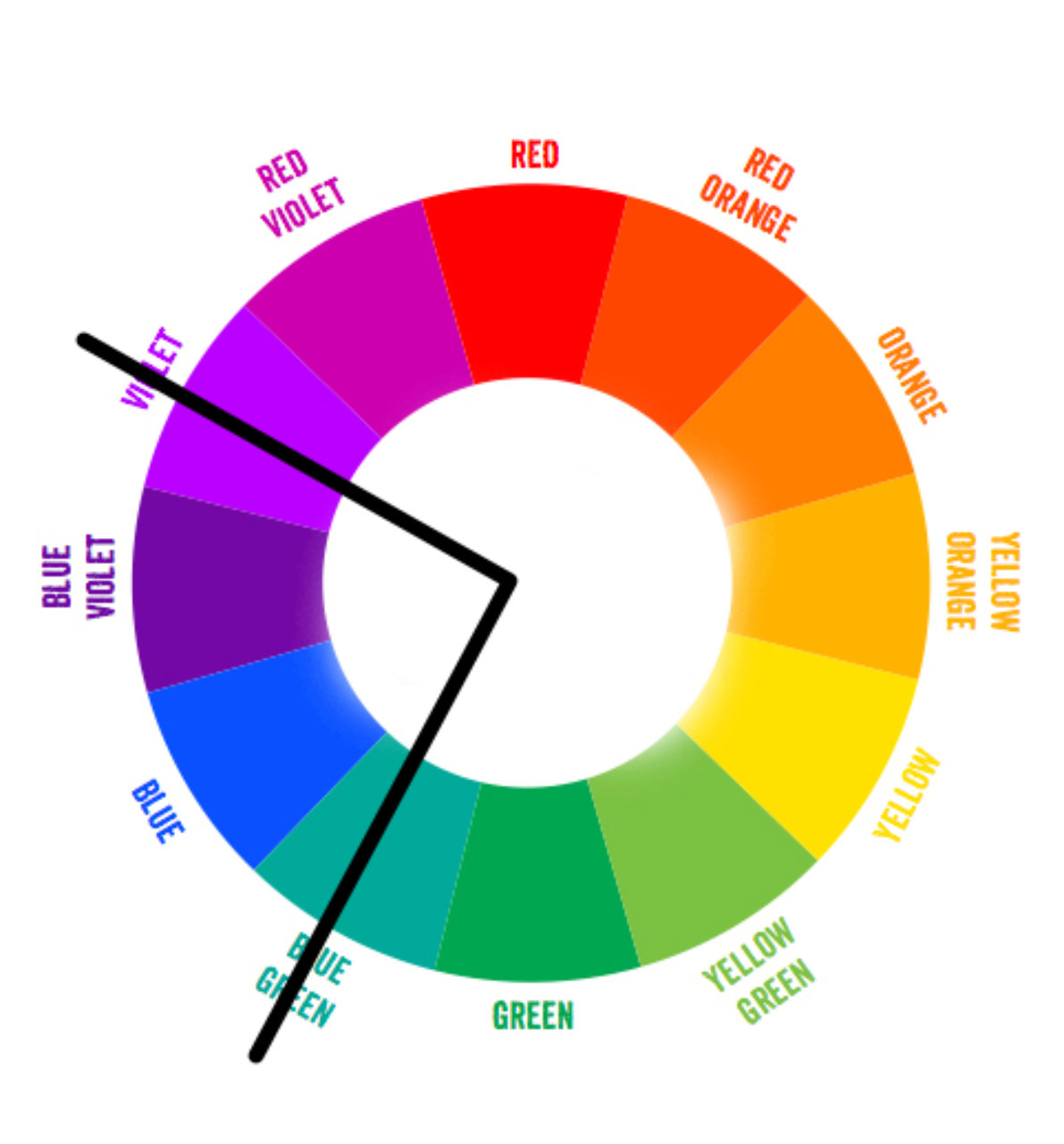
Take the color temperature strategy one step further, and surround blue with colors adjacent to it on the color wheel (also called ‘analogous’ colors.)
A lush and calming effect is achieved when creating a grouping with cool analogous colors.
Also, whether using cool or hot colors, analogous groupings tend to be the most harmonious to view since the colors used have components of each contained within them, helping them blend seamlessly with one another.
Blue and maroon/purple are one of my favorite color combinations to achieve this calm, lush, and cool effect. Just take a peek at some of my favorites:
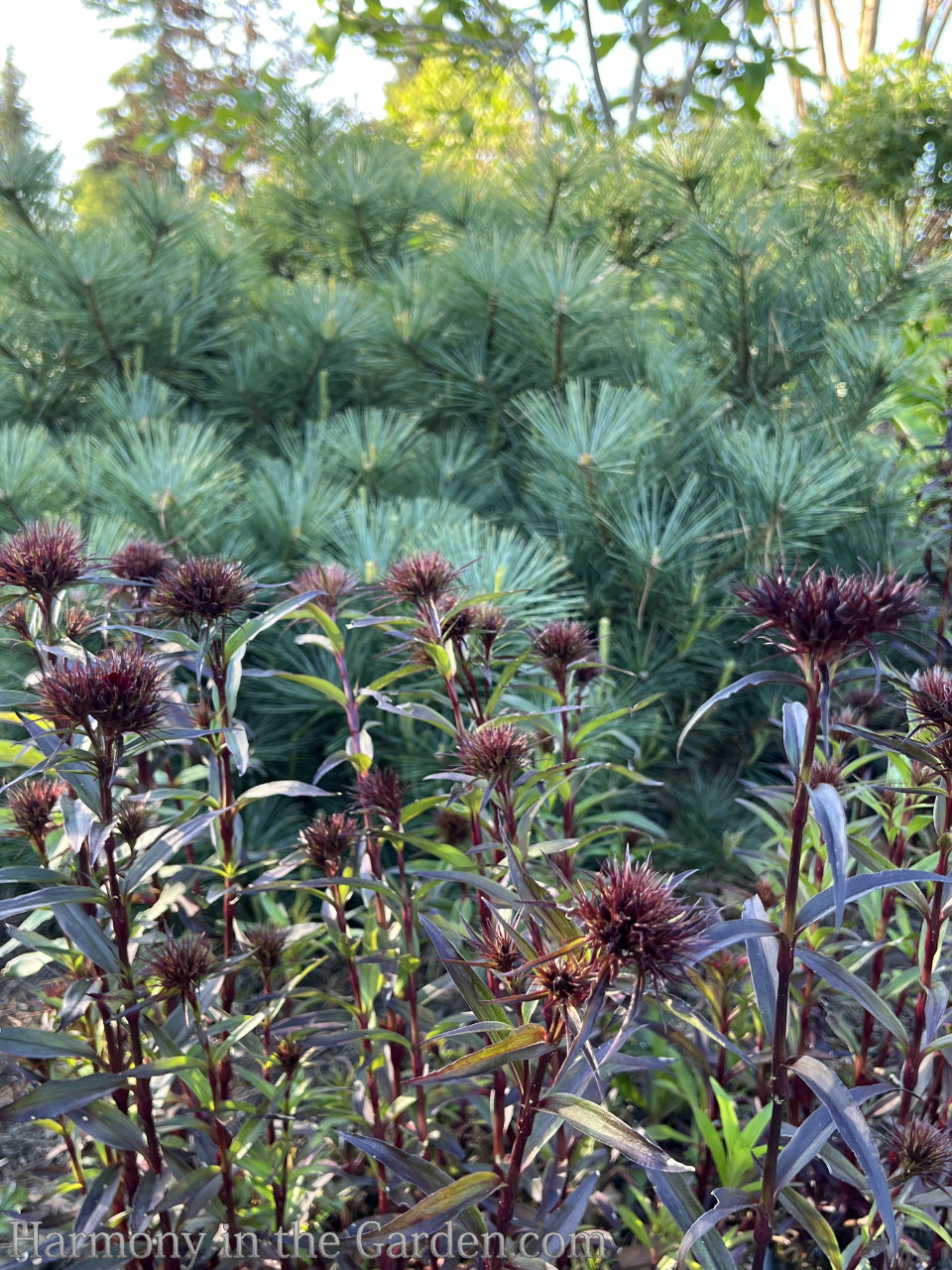

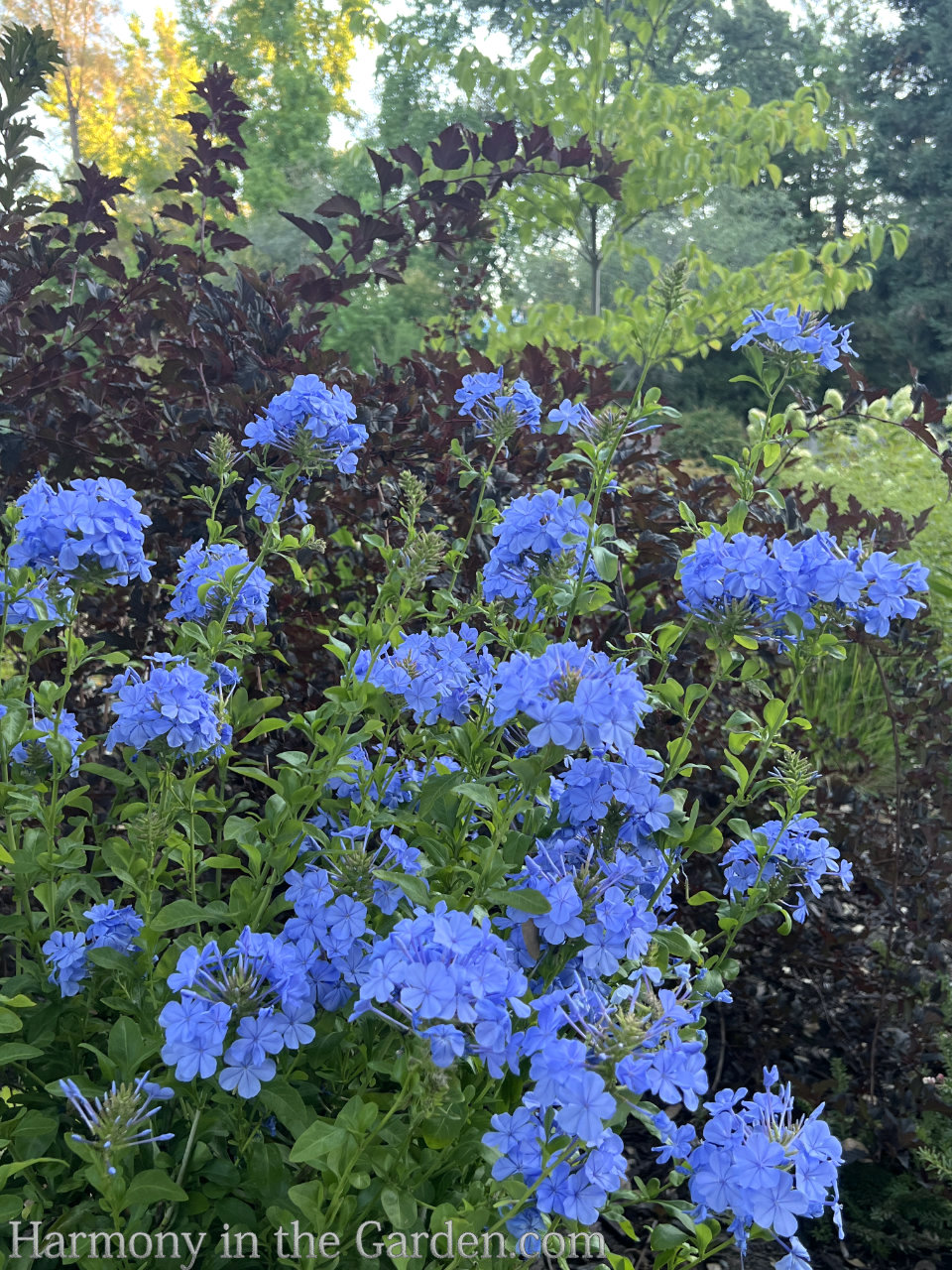
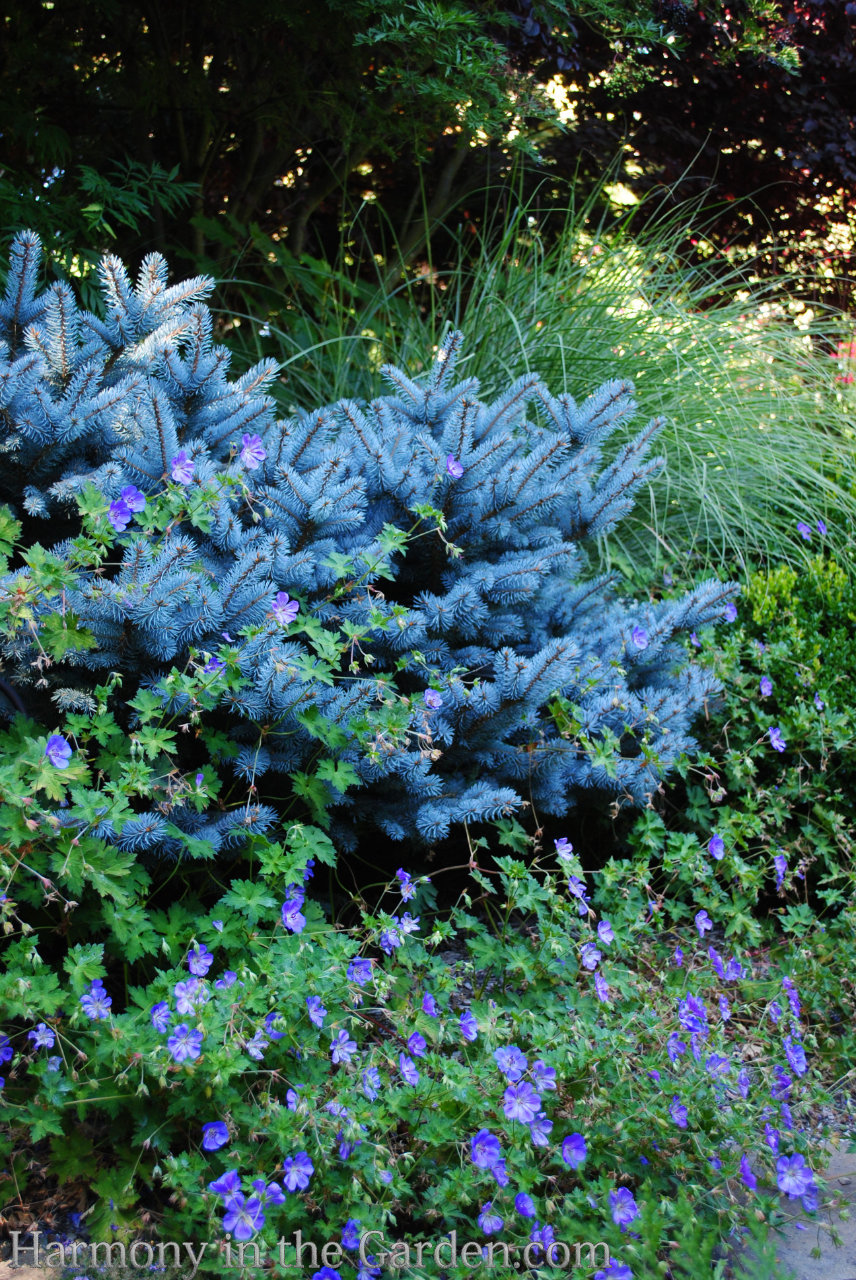
3. Add visual energy using complementary colors
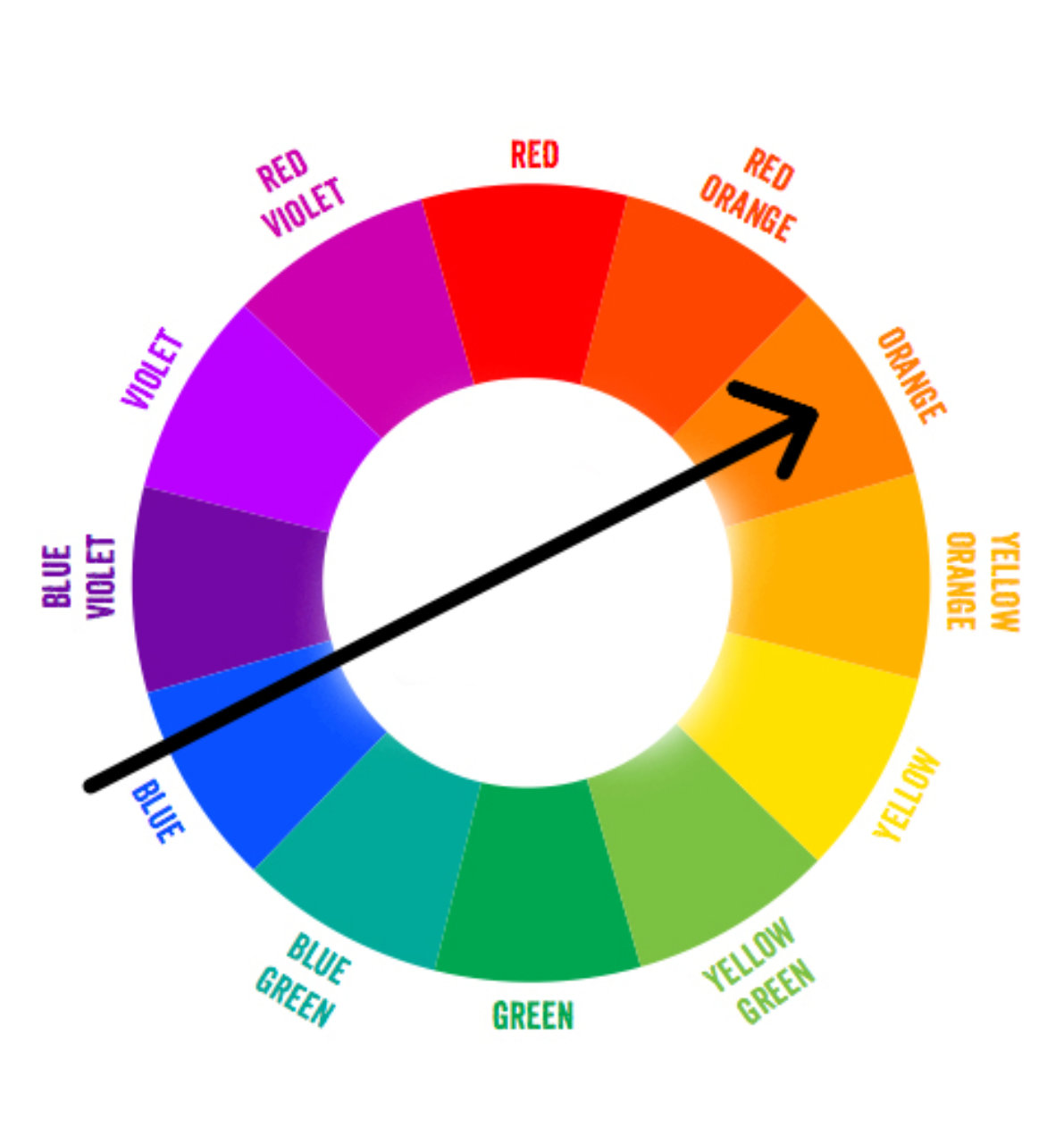
If you want to add visual energy to your garden, adding blue’s complementary color will help wake up a slightly snoozy garden. Complementary colors can provide the visual ‘punch’ a garden may need to wake it up.
Referring back to the color wheel, complementary colors are those located opposite one other.
For example, blue’s opposite is orange – this combination commands the eye to stop and take notice, without having a jarring effect.

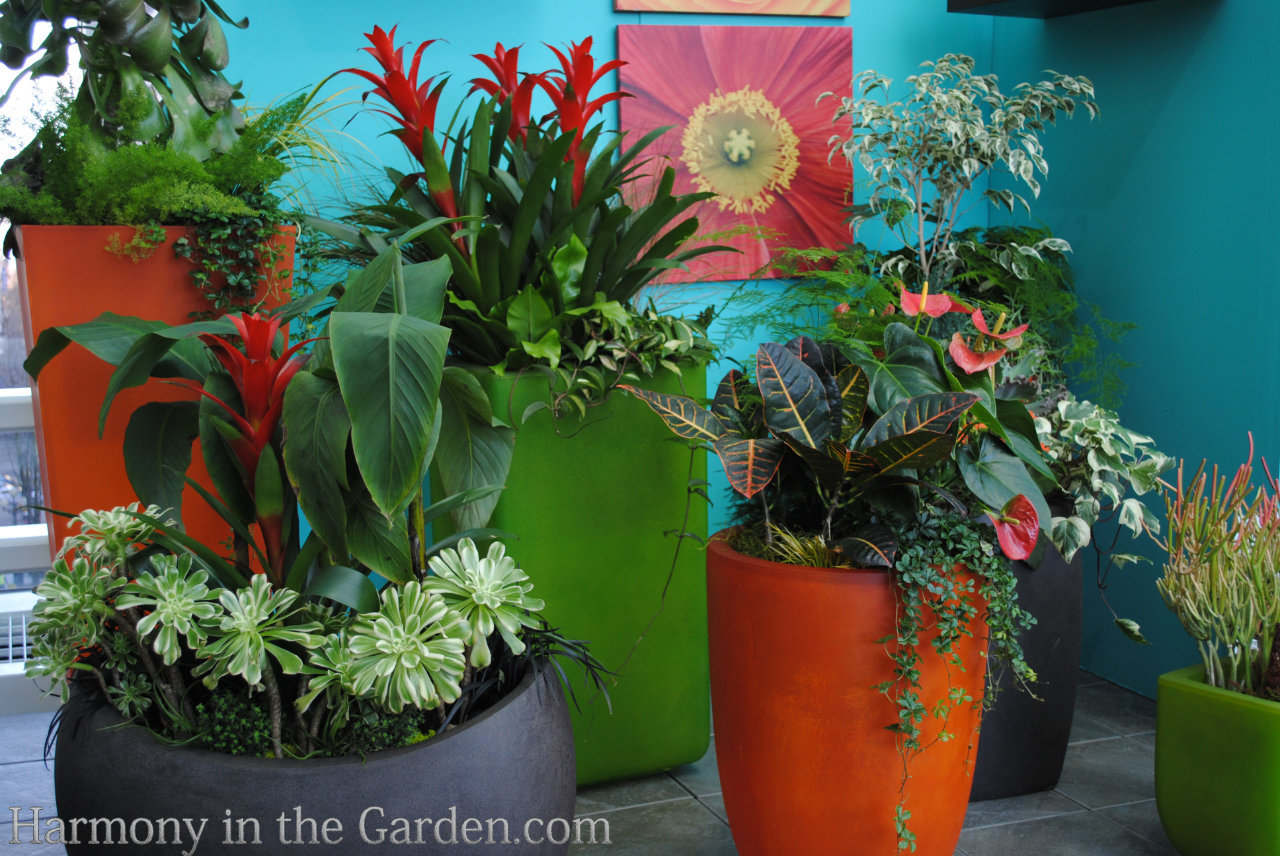
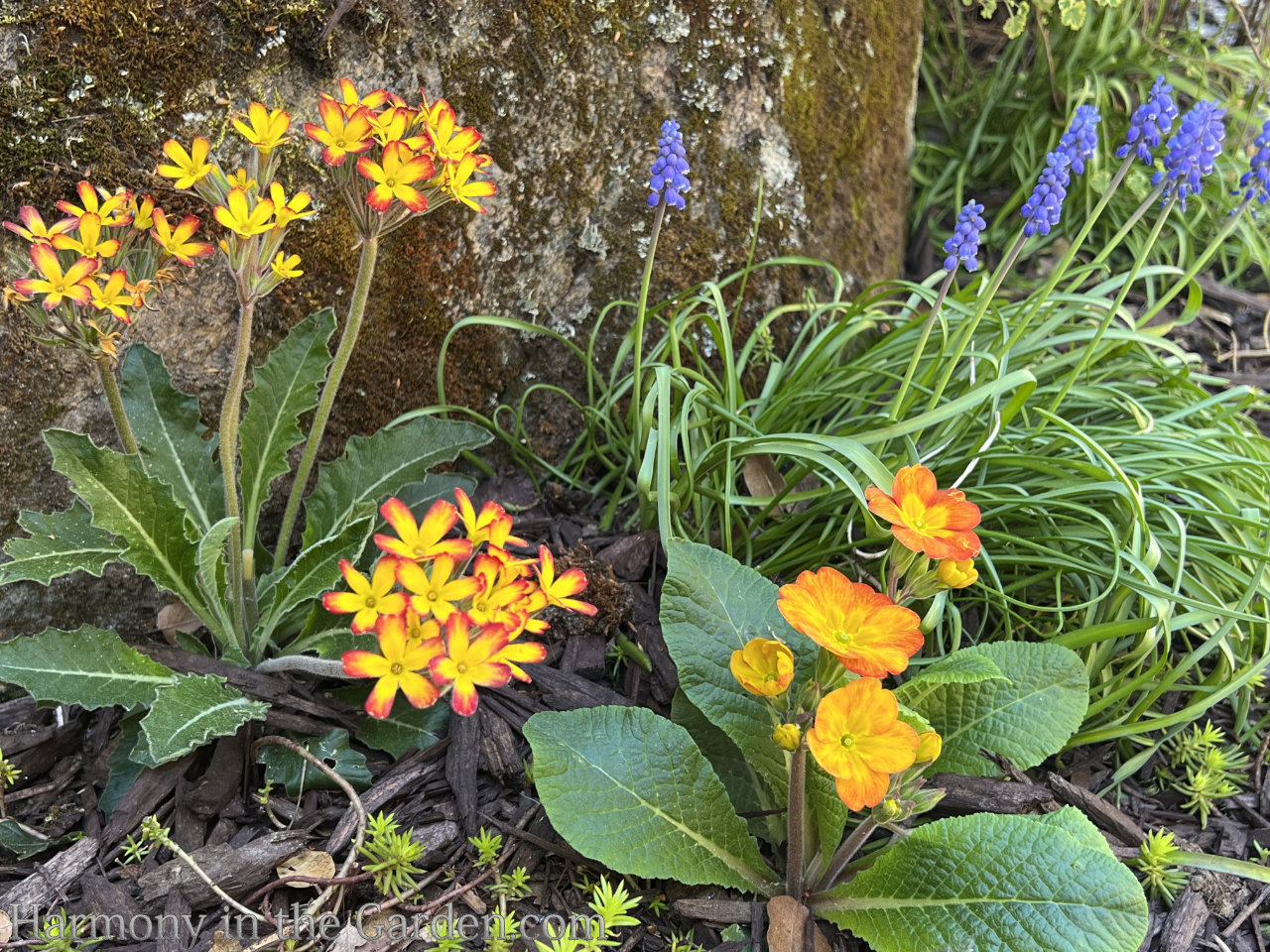
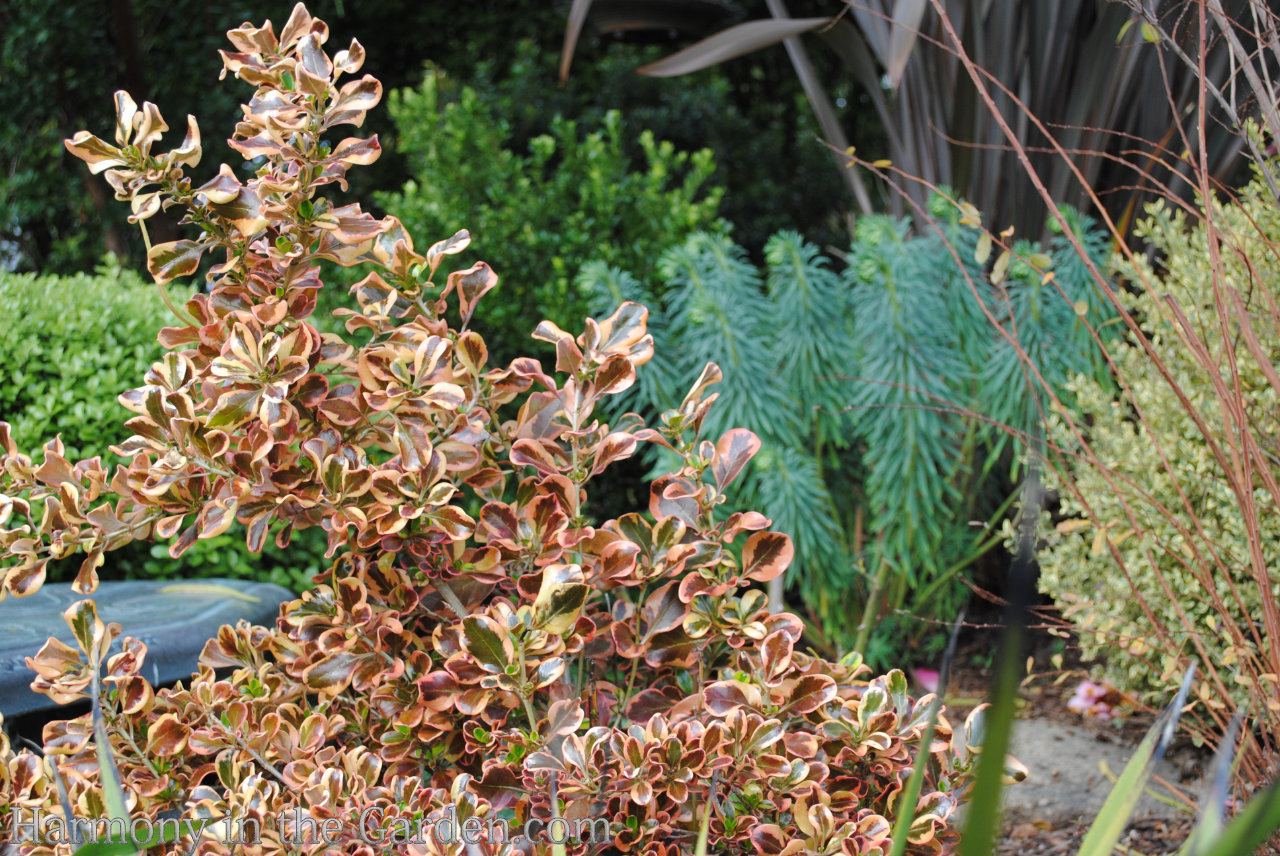
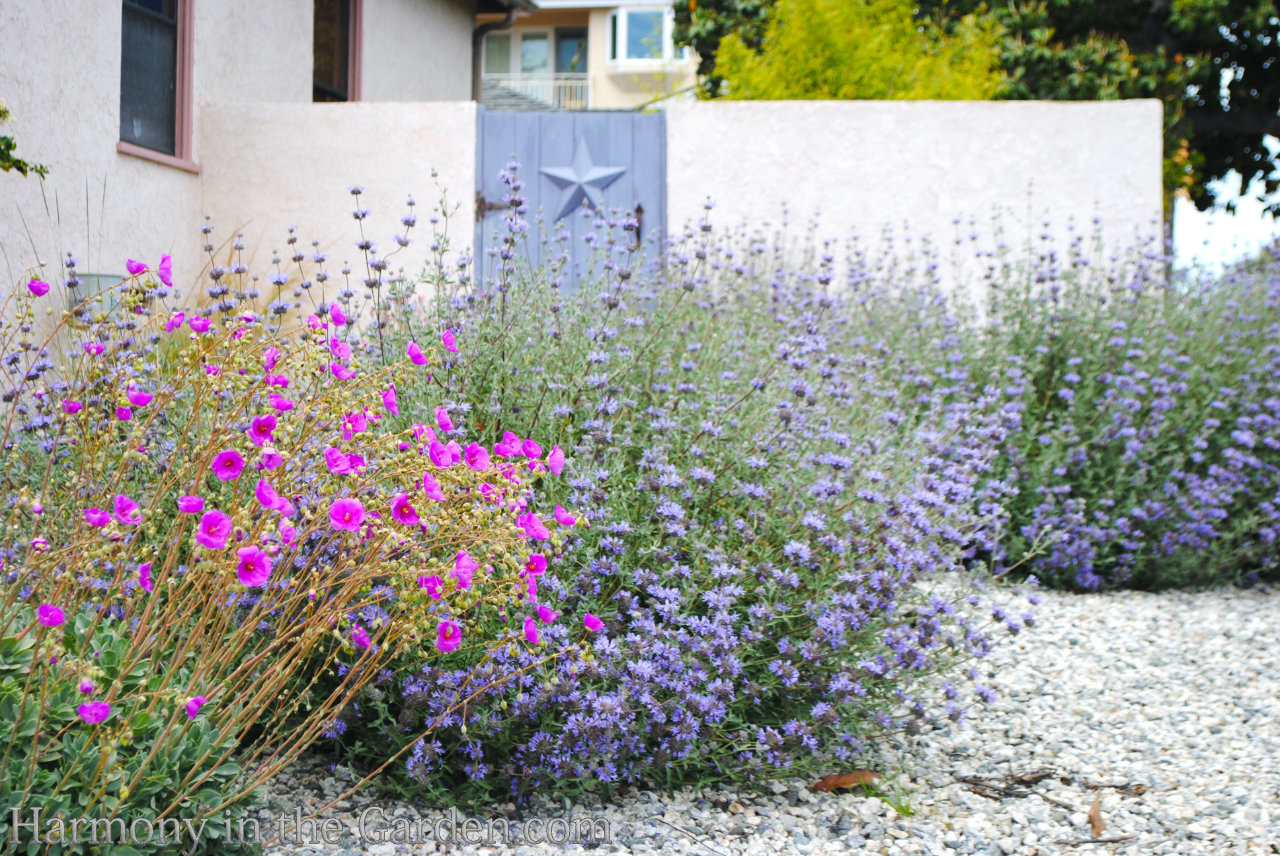
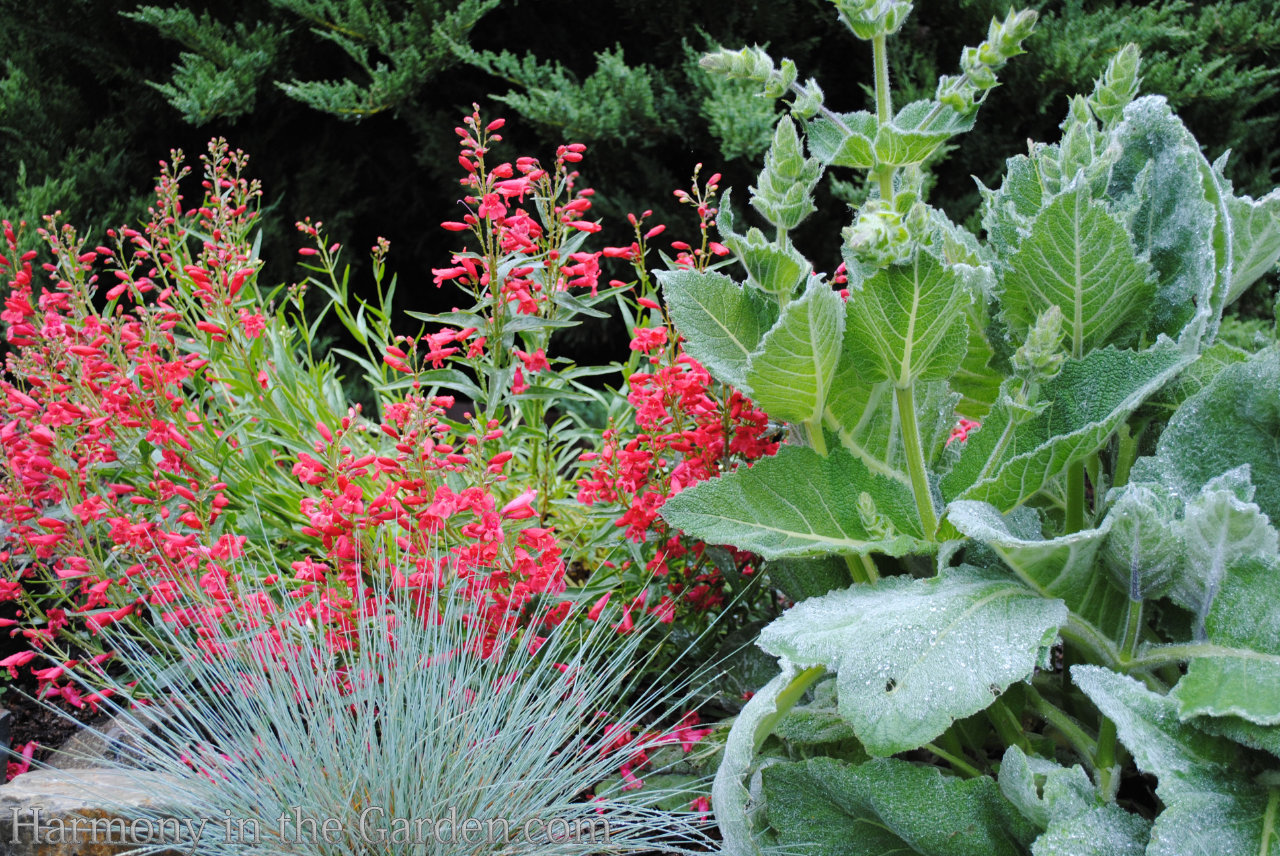
4. Expand a small space
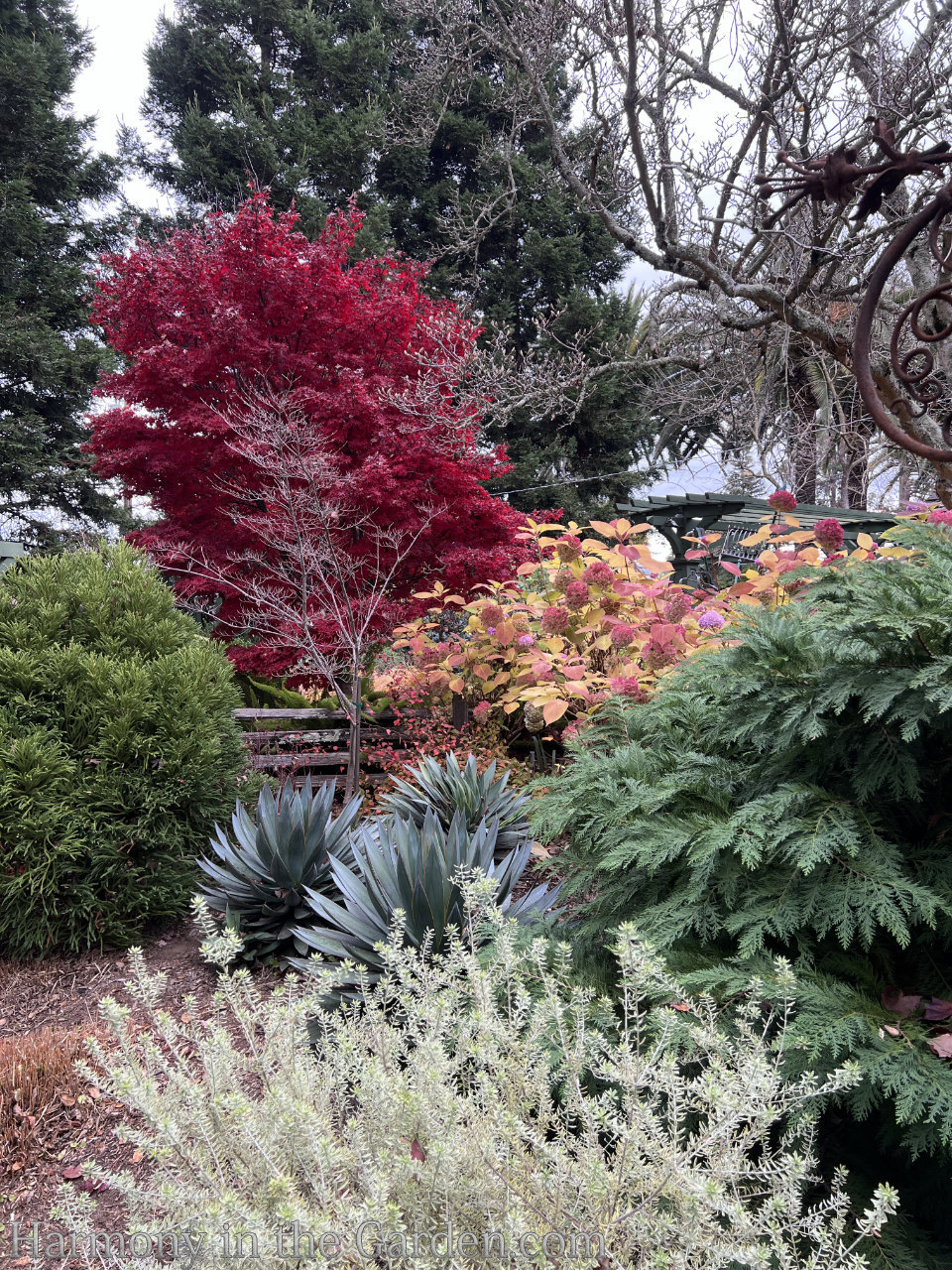
If you long for deeper garden beds than you have the space for, manipulating color to create the illusion of a much deeper garden bed might be the perfect solution.
As mentioned above, when divided in half, the color wheel represents both cool and warm temperatures.
These same colors also represent movement: the cool colors (green through purple) are visually passive, while warm colors (yellow through red) are visually active.
This means that cool colors appear to recede while warm colors appear to move forward.
When the eye perceives movement, this is translated into looking deeper than it actually is.
In the example, left, the trio of ‘Blue Glow’ agaves placed in front of the fiery red maple provide visual movement, thanks to both the cool and warm colors.
It’s subtle, but effective.
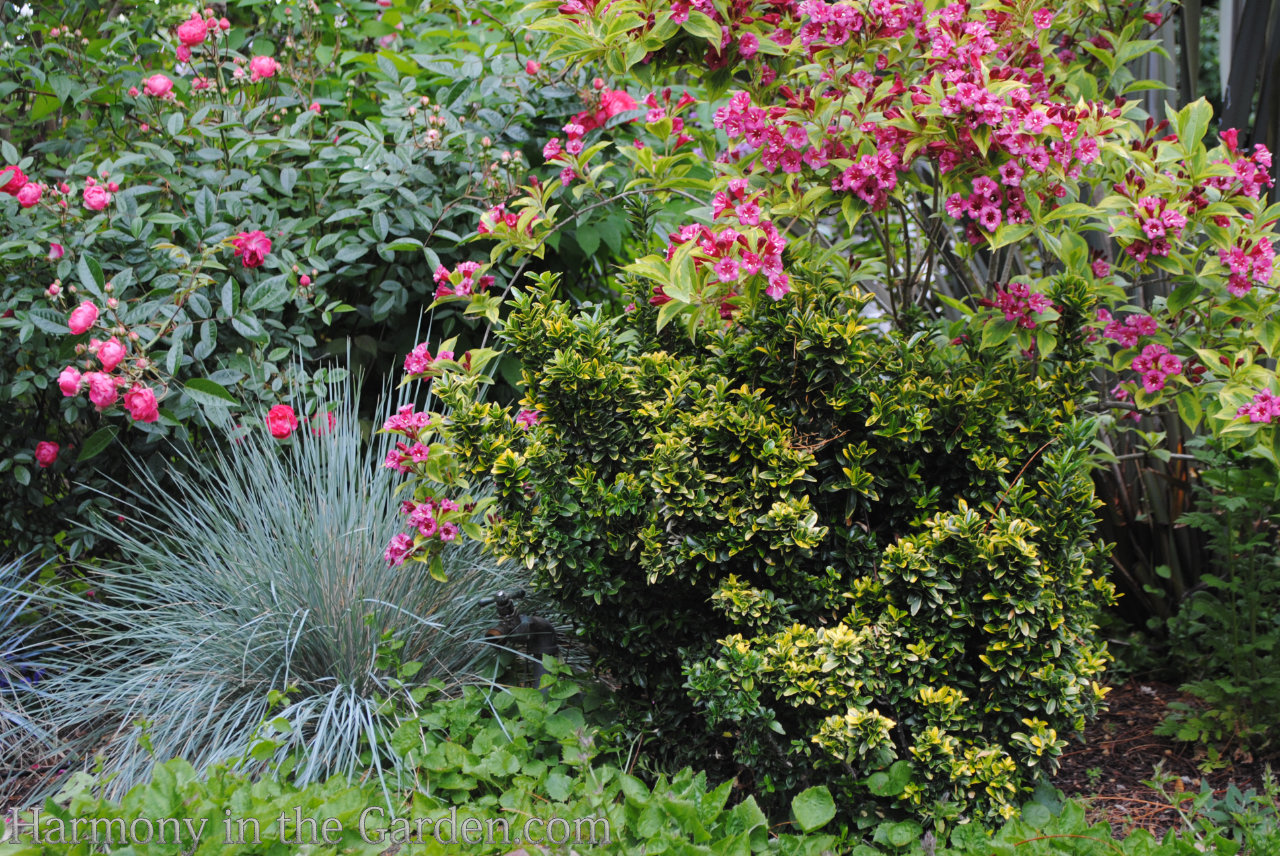
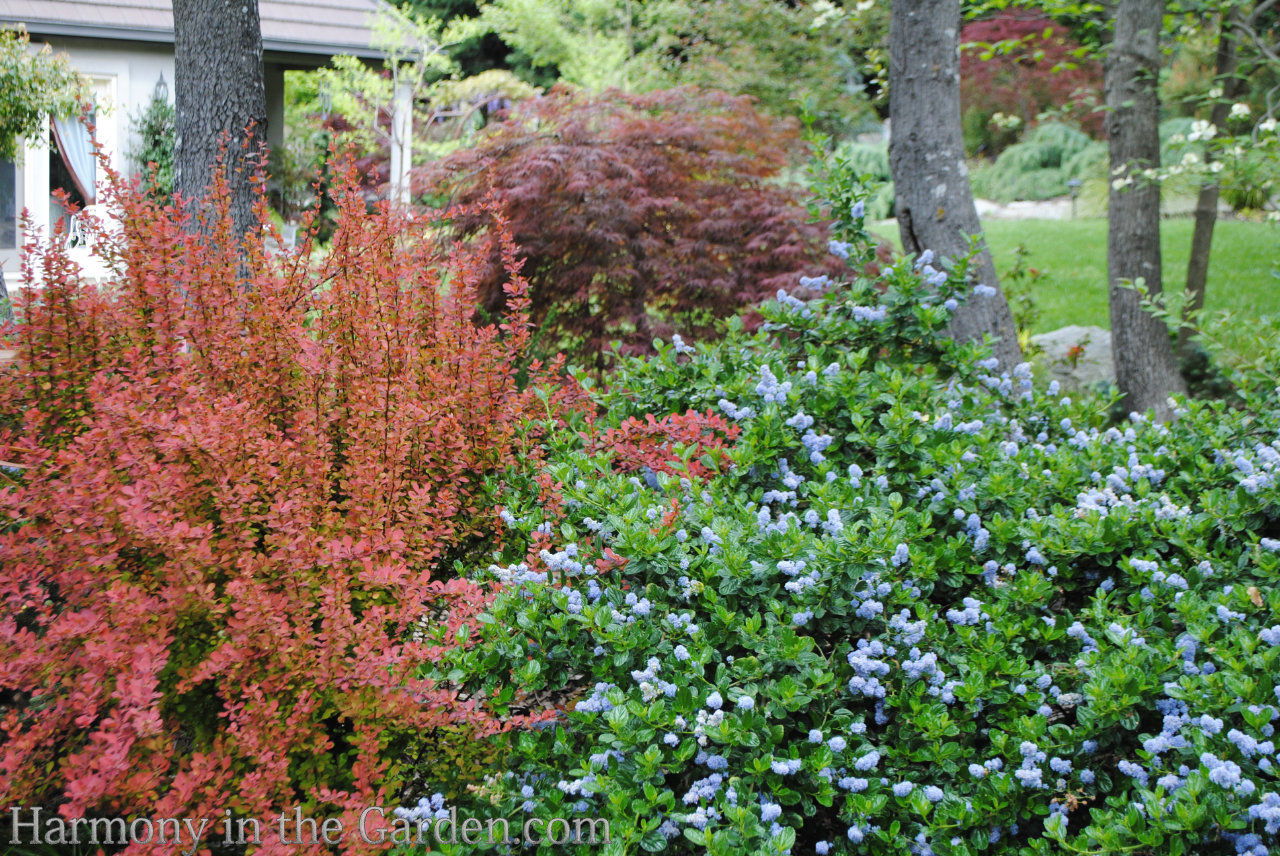

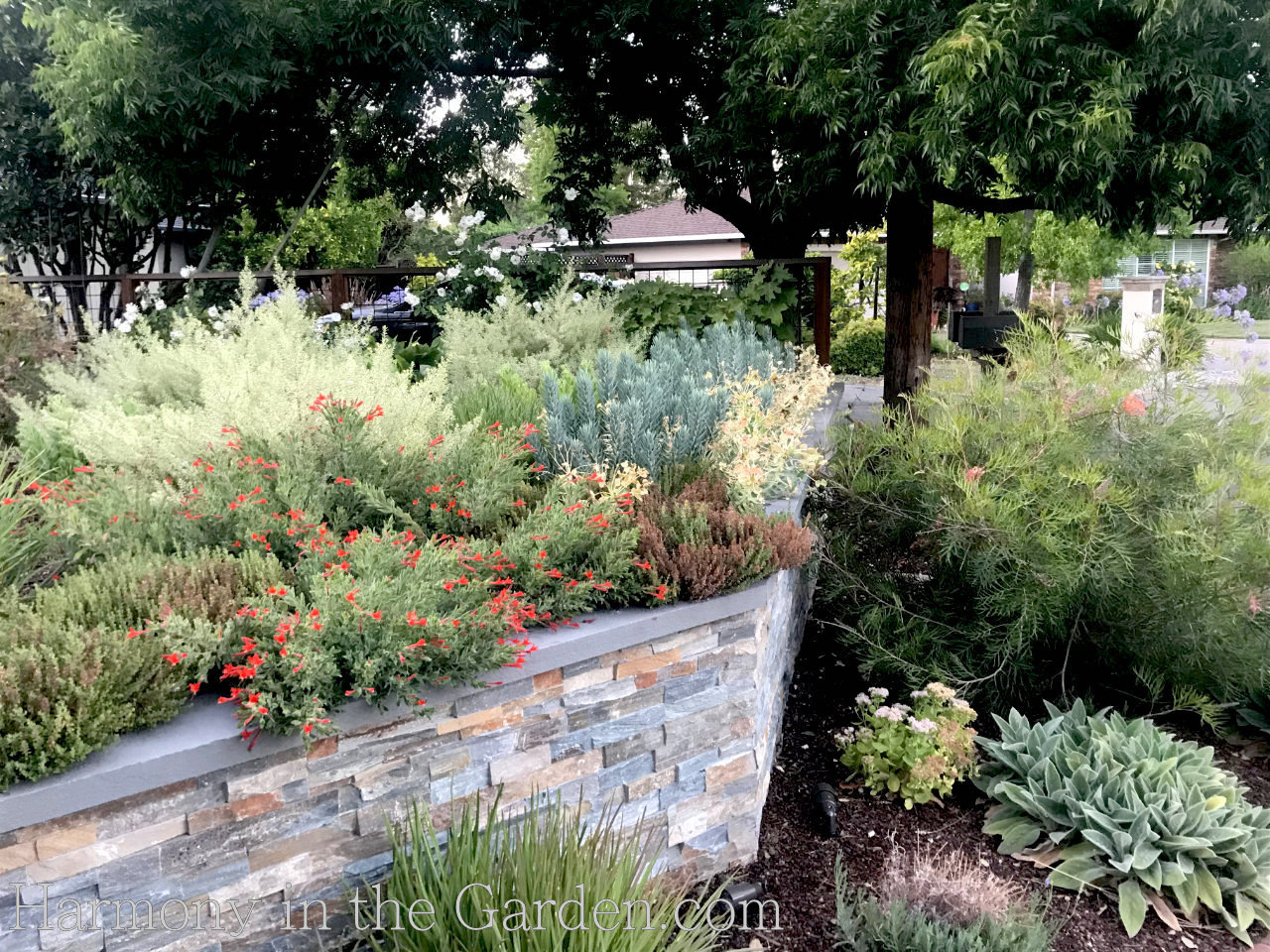
5. Don’t forget blue foliage!
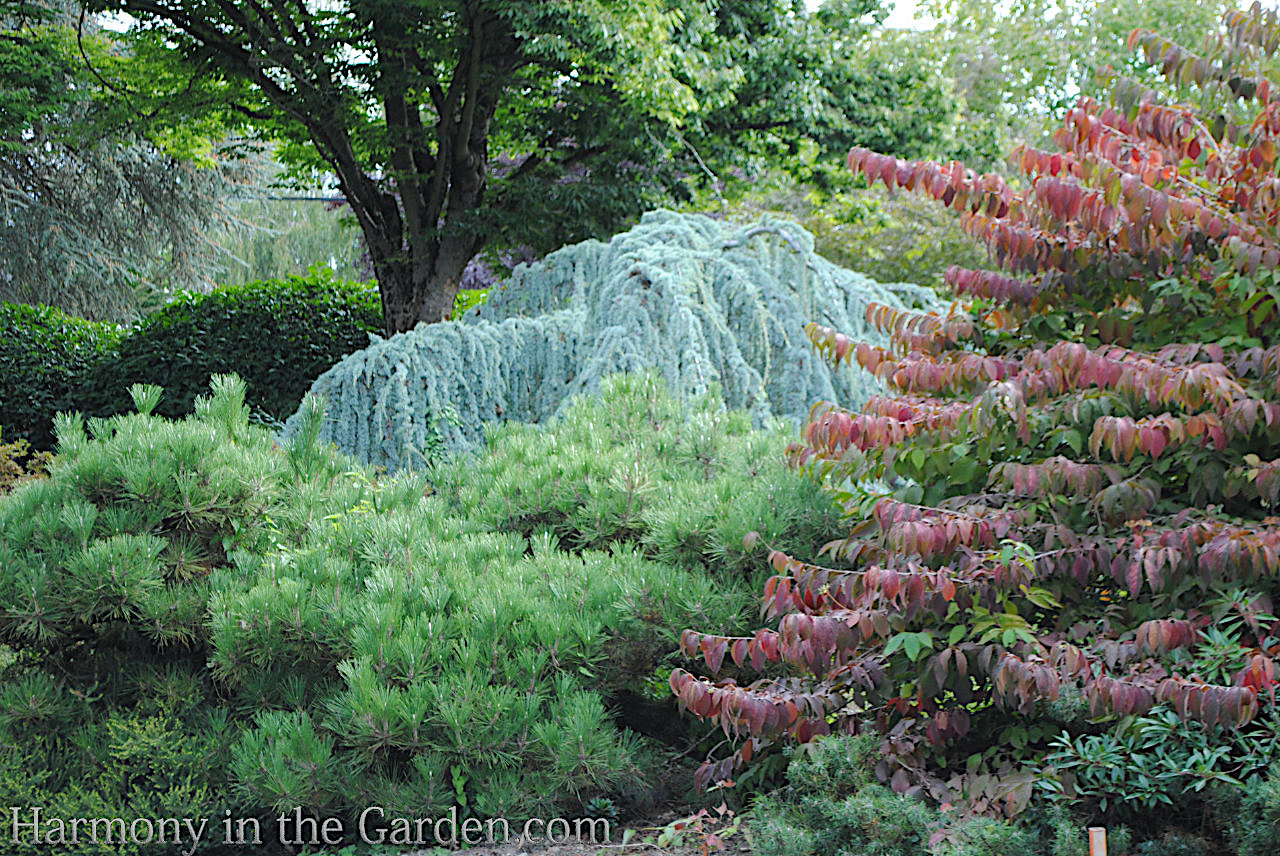
Plants with blue foliage are some of my favorites to use and are often fantastic sources of evergreen color.
Not to be confused with glaucous (click here to read about this elusive color in the garden), blue foliage among plants, while uncommon, is spectacular when planted near dark green, maroon, or silver colors from nearby plants.
When used to complement your blue flowers, plants like blue fescue grass, blue oat grass, and blue hostas can provide striking and long-lasting harmony, enhancing the overall blue theme of your garden.

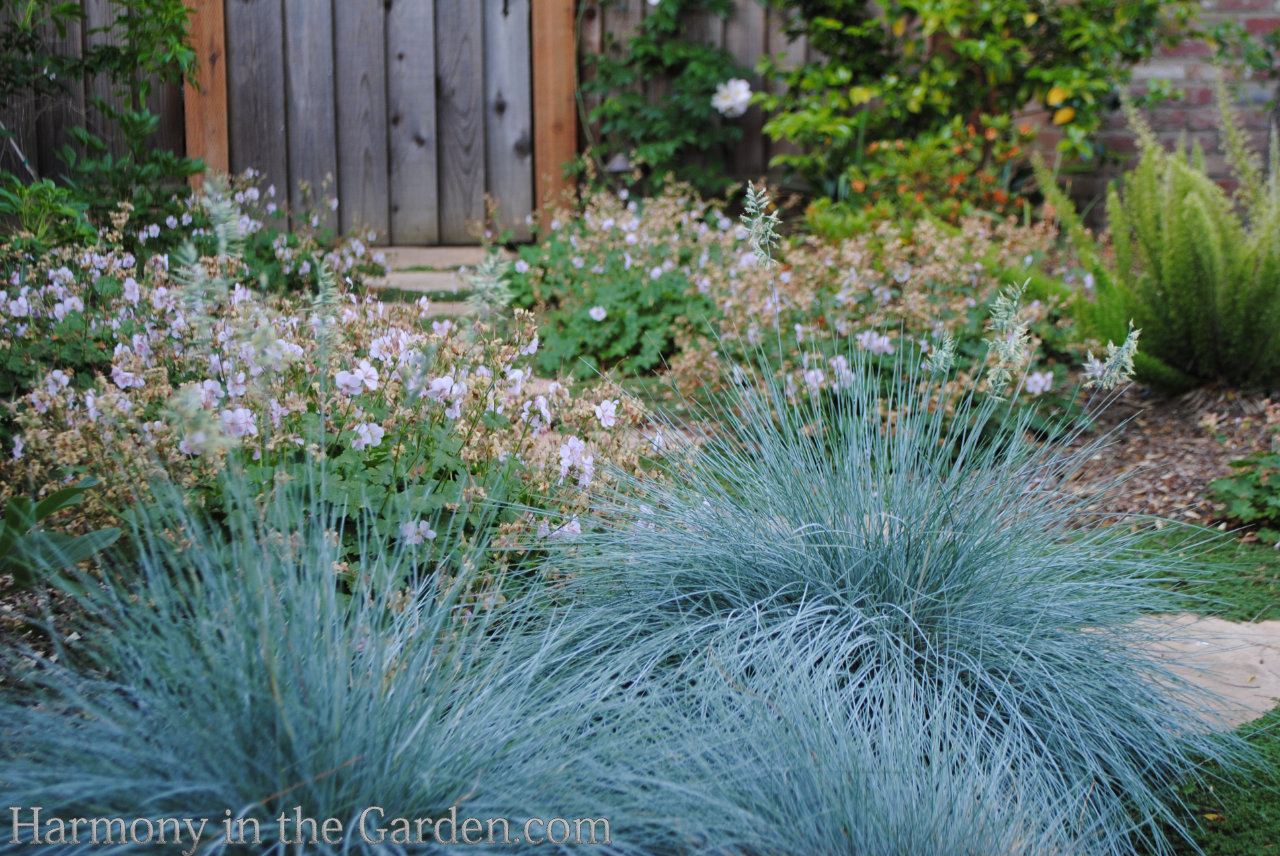

I could write a completely separate post about blue succulents (and cactus, like this one (left) spotted in Jim Bishop’s garden) but I’ll limit myself to including just a few of my favorites.
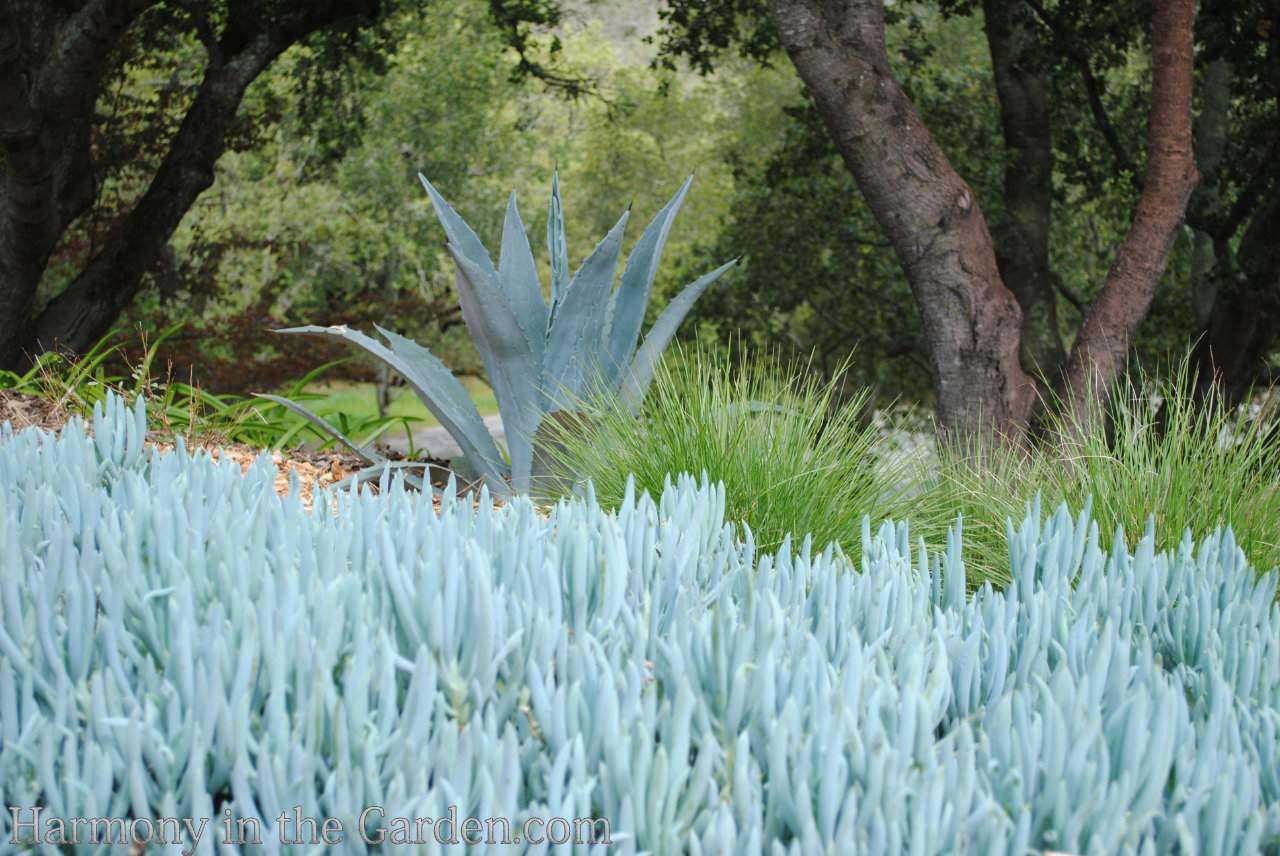

6. Garden accents & other non-living elements

When used in conjunction with blue flowers and foliage, the occasional splash of blue from a non-living element (such as a trellis or container) not only echoes the blue plants but also provides year-round interest.
The following are some of my favorite inspirational examples:

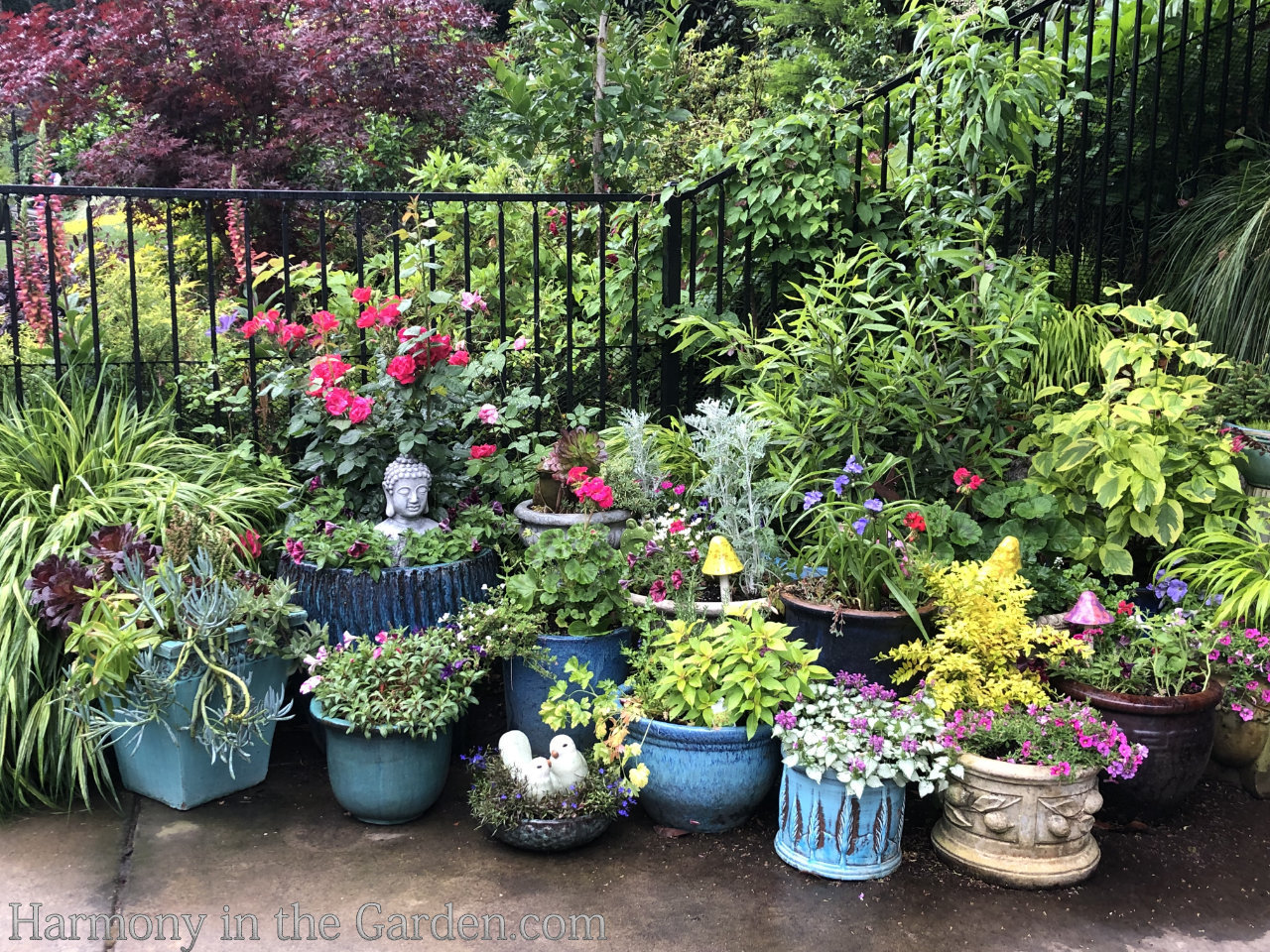
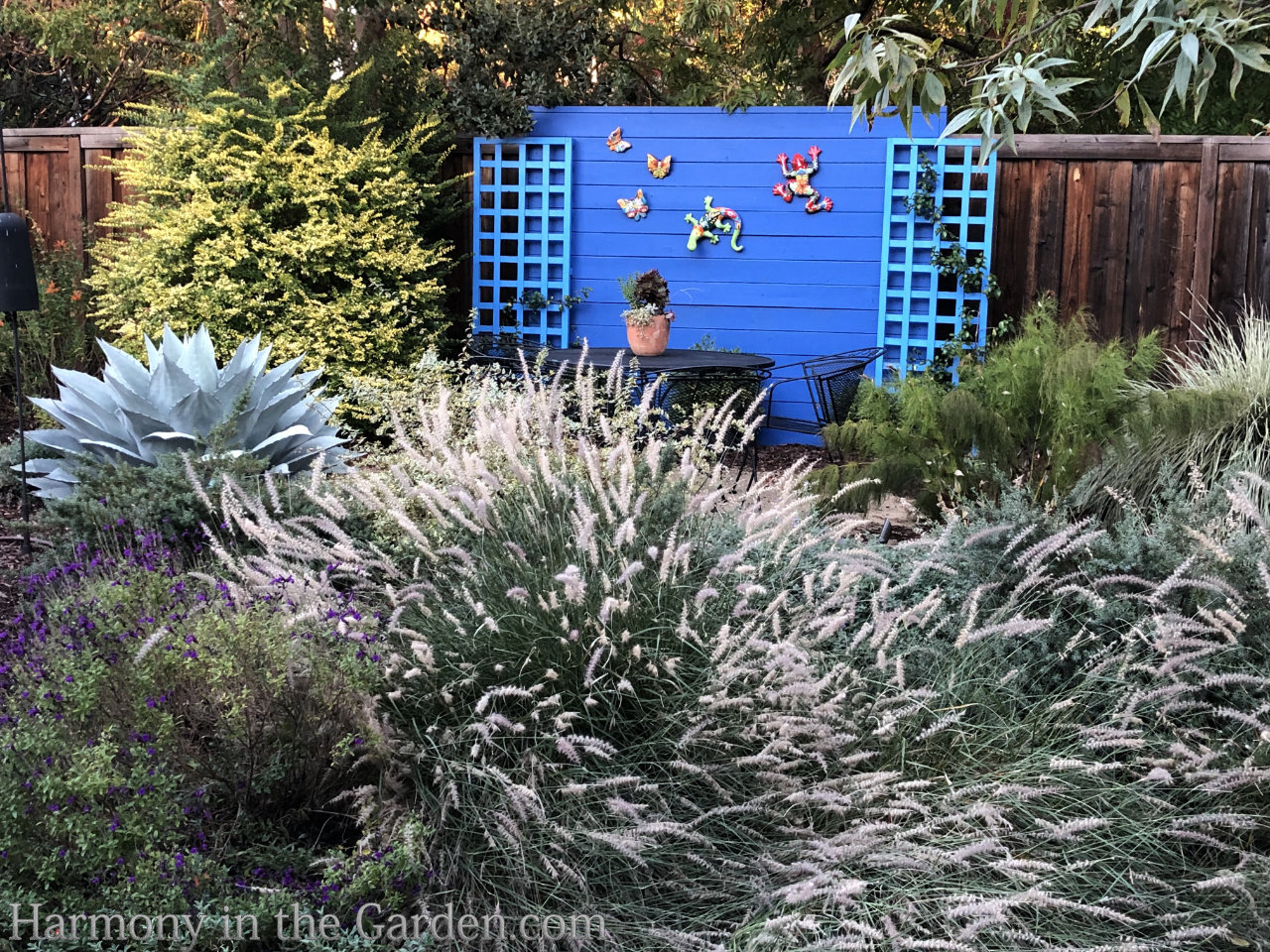
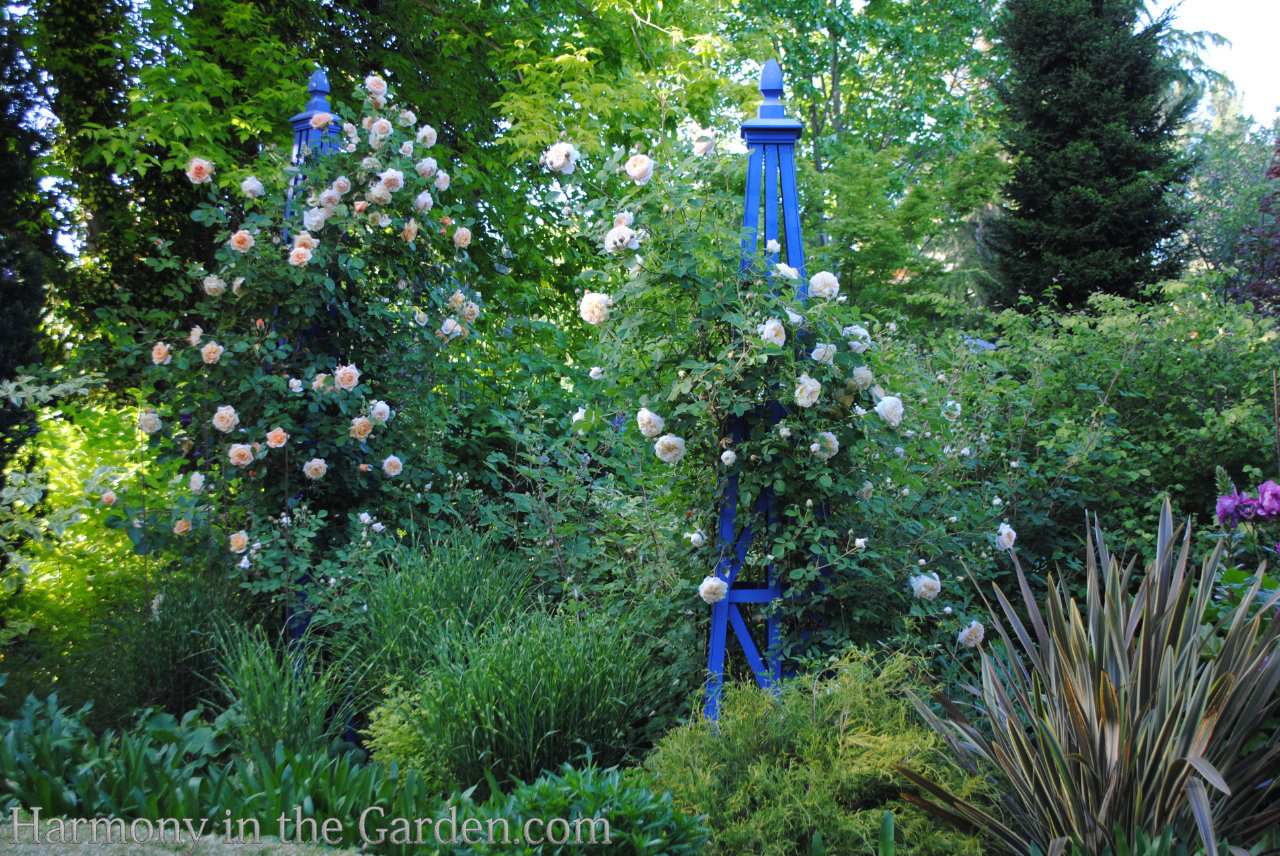

7. More of my favorite sources of blue for your garden
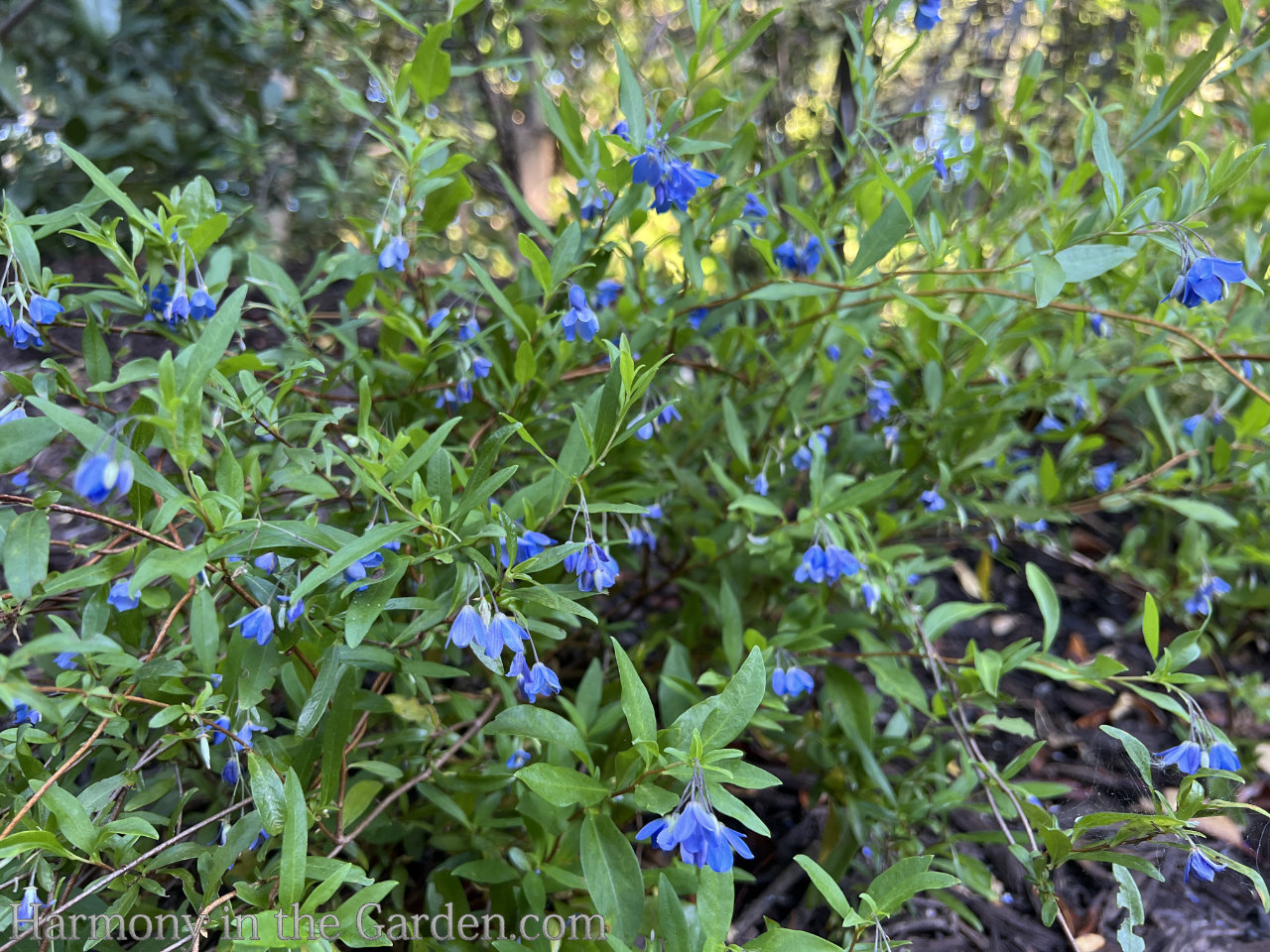
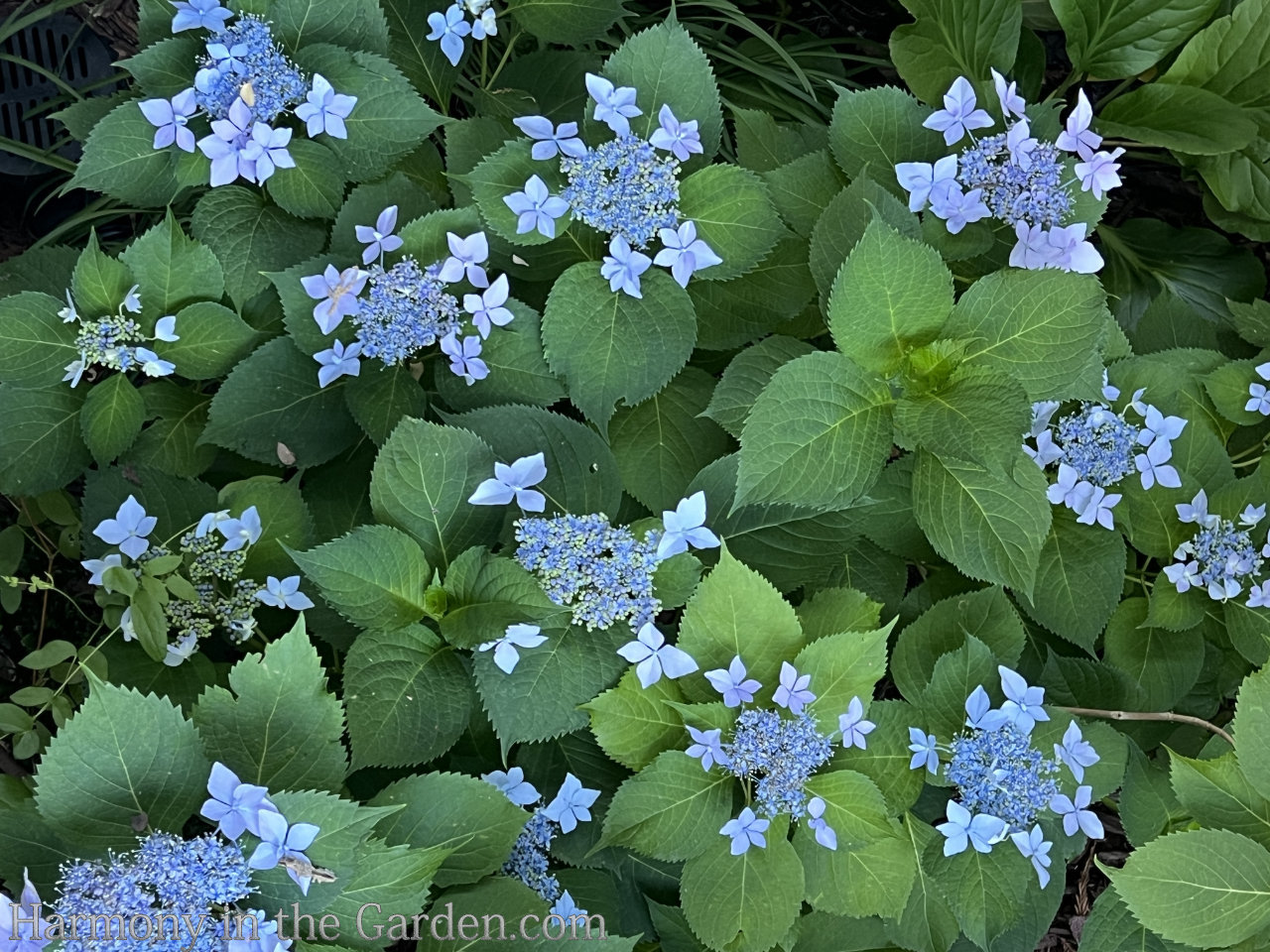
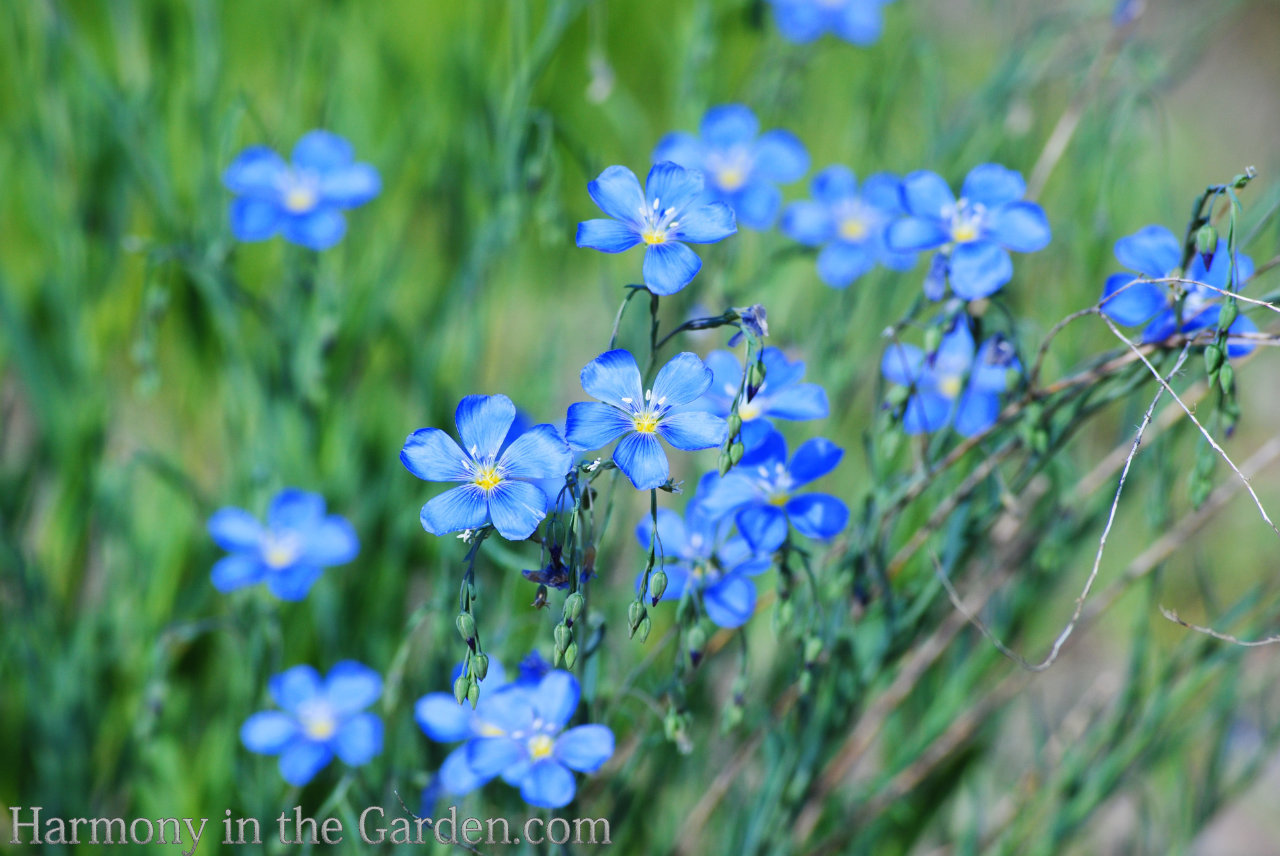
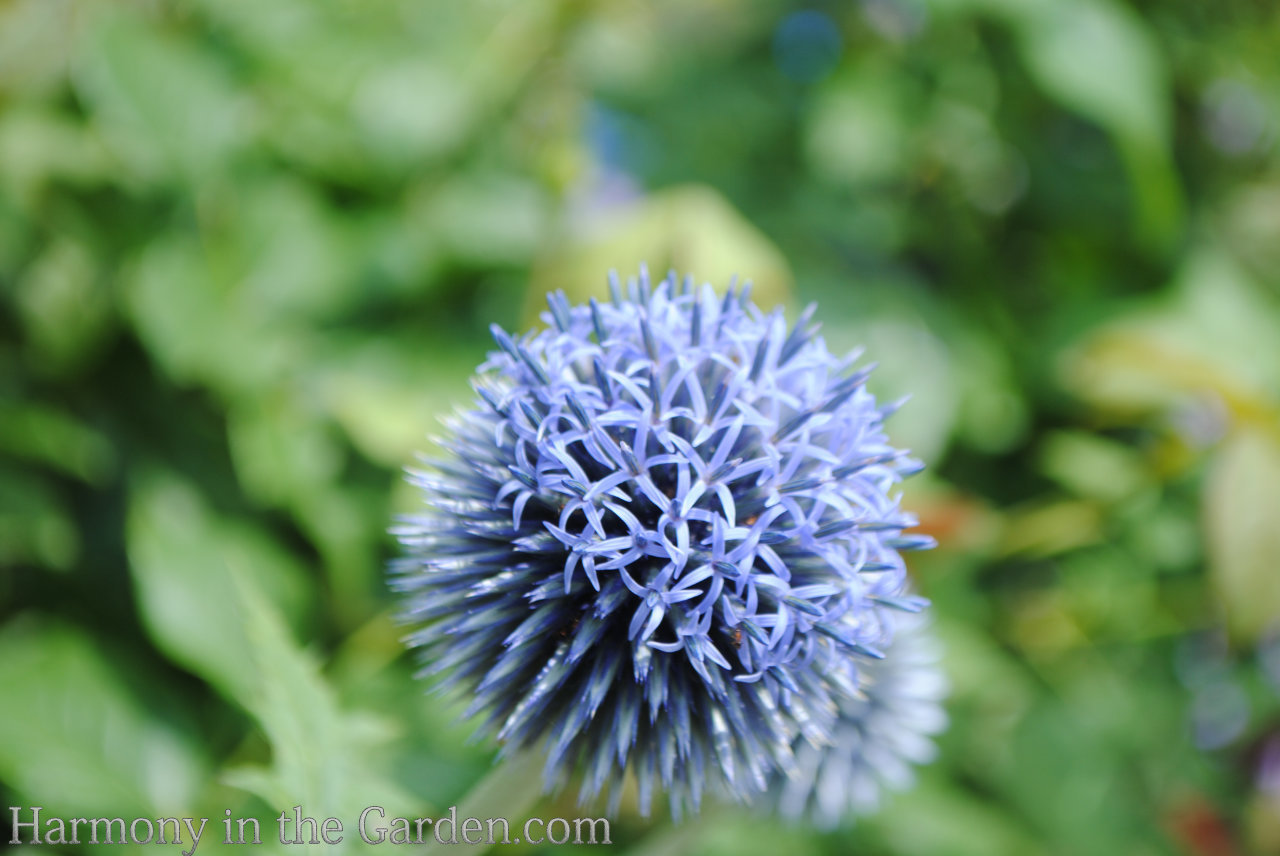


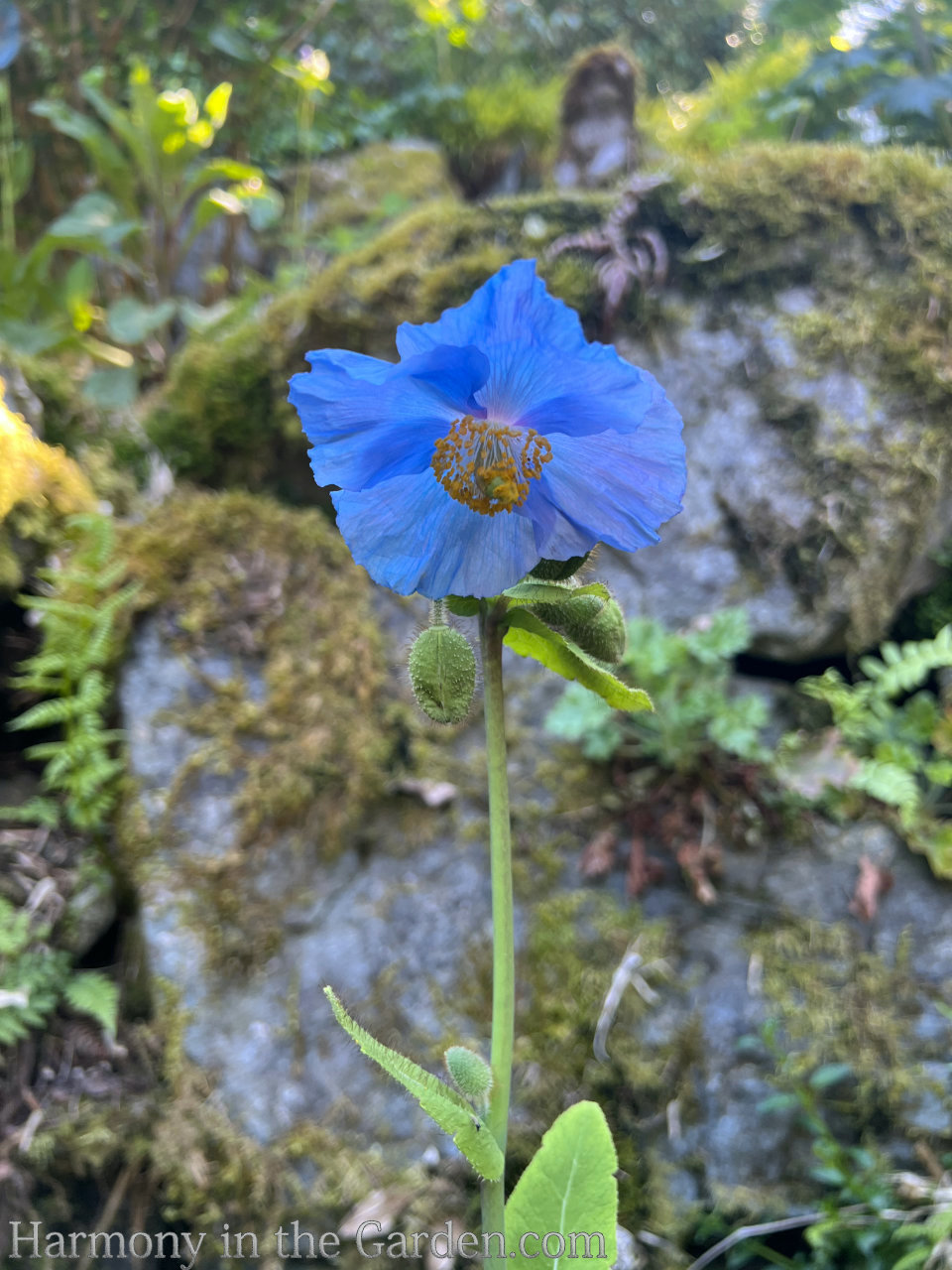
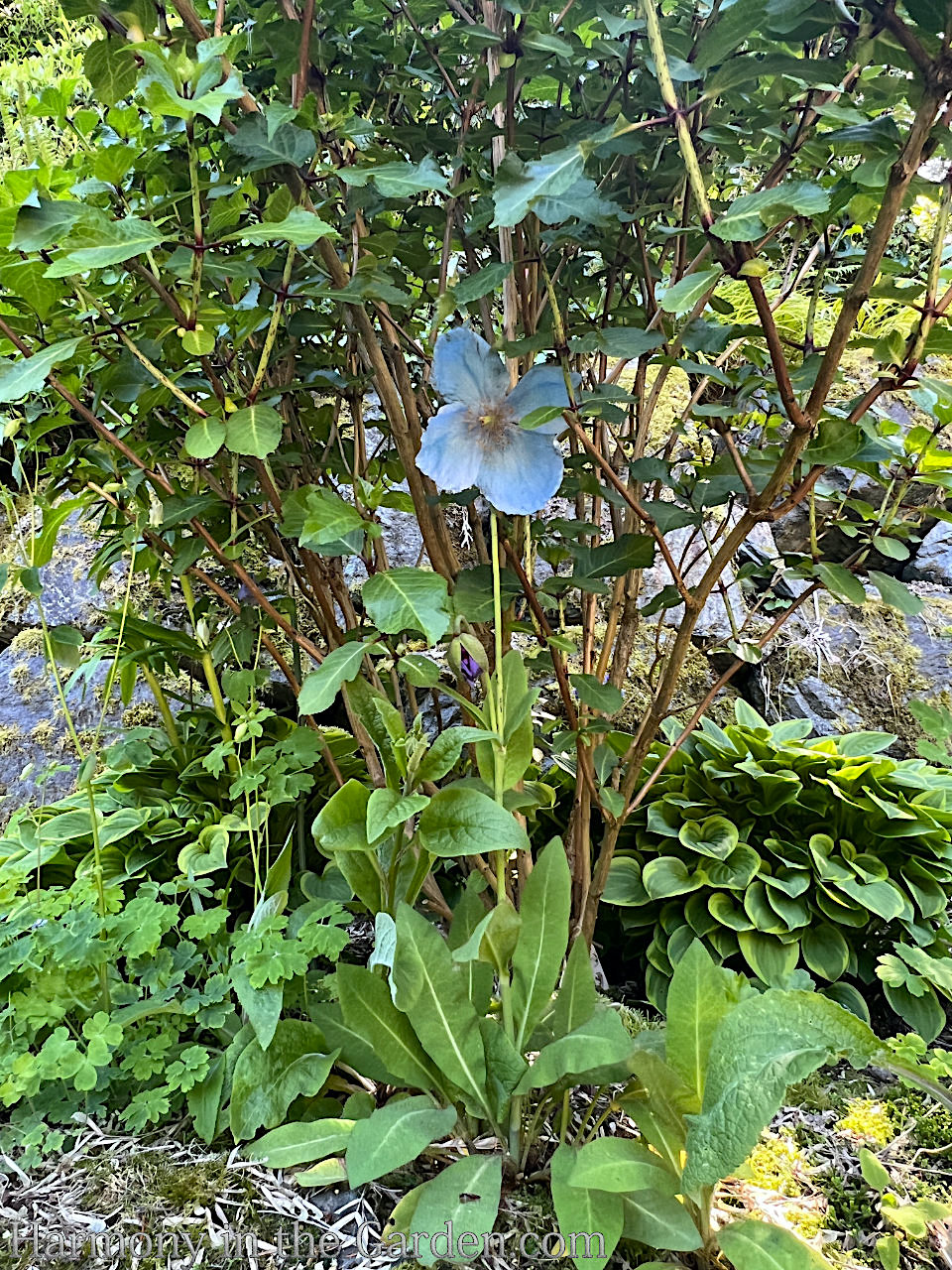

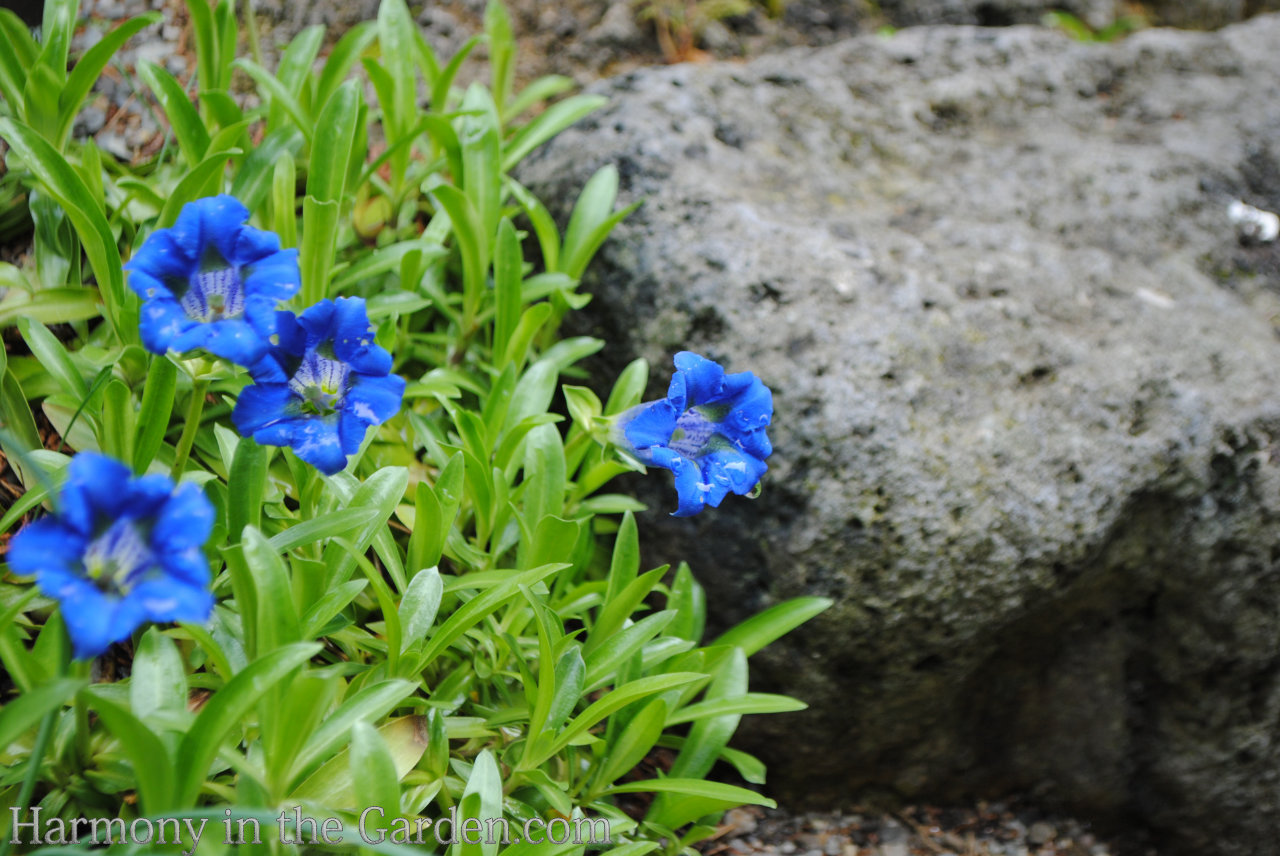
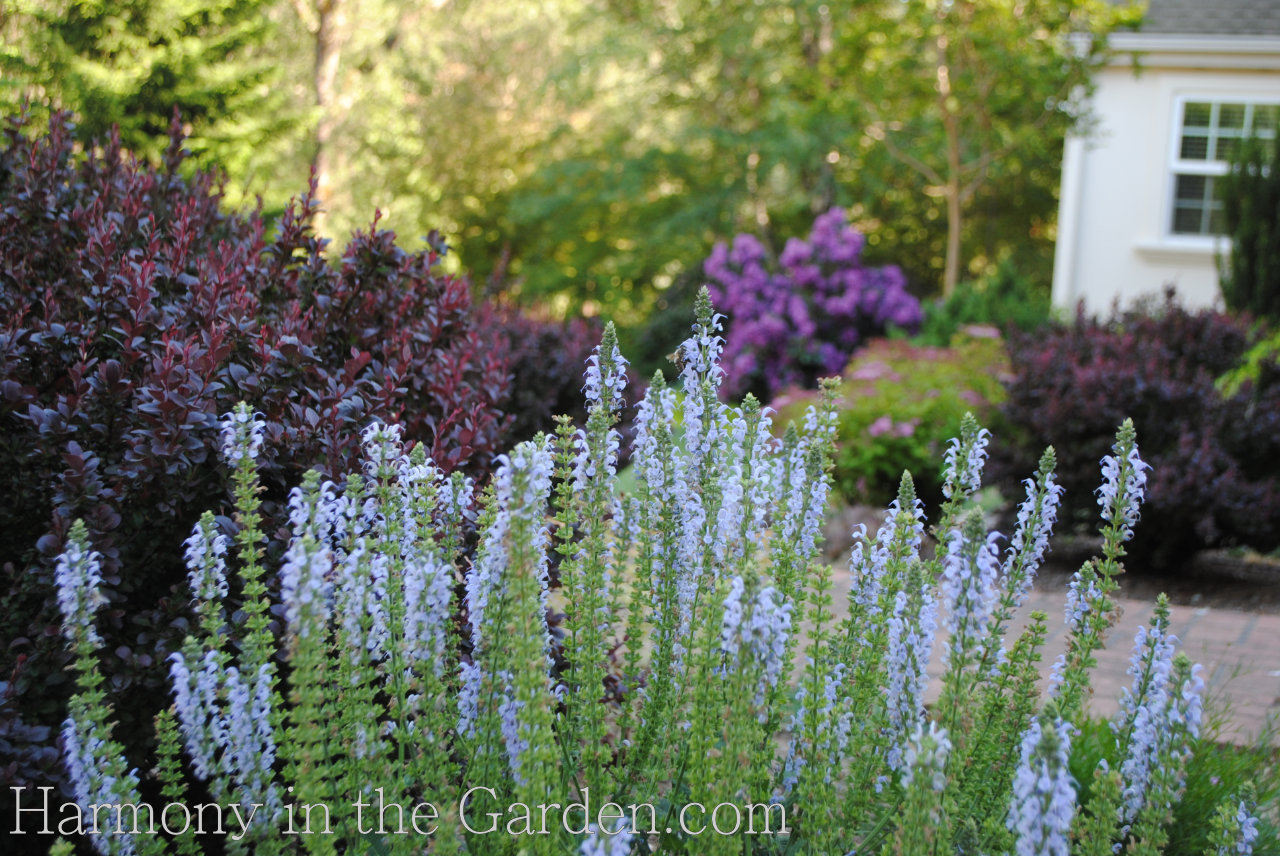
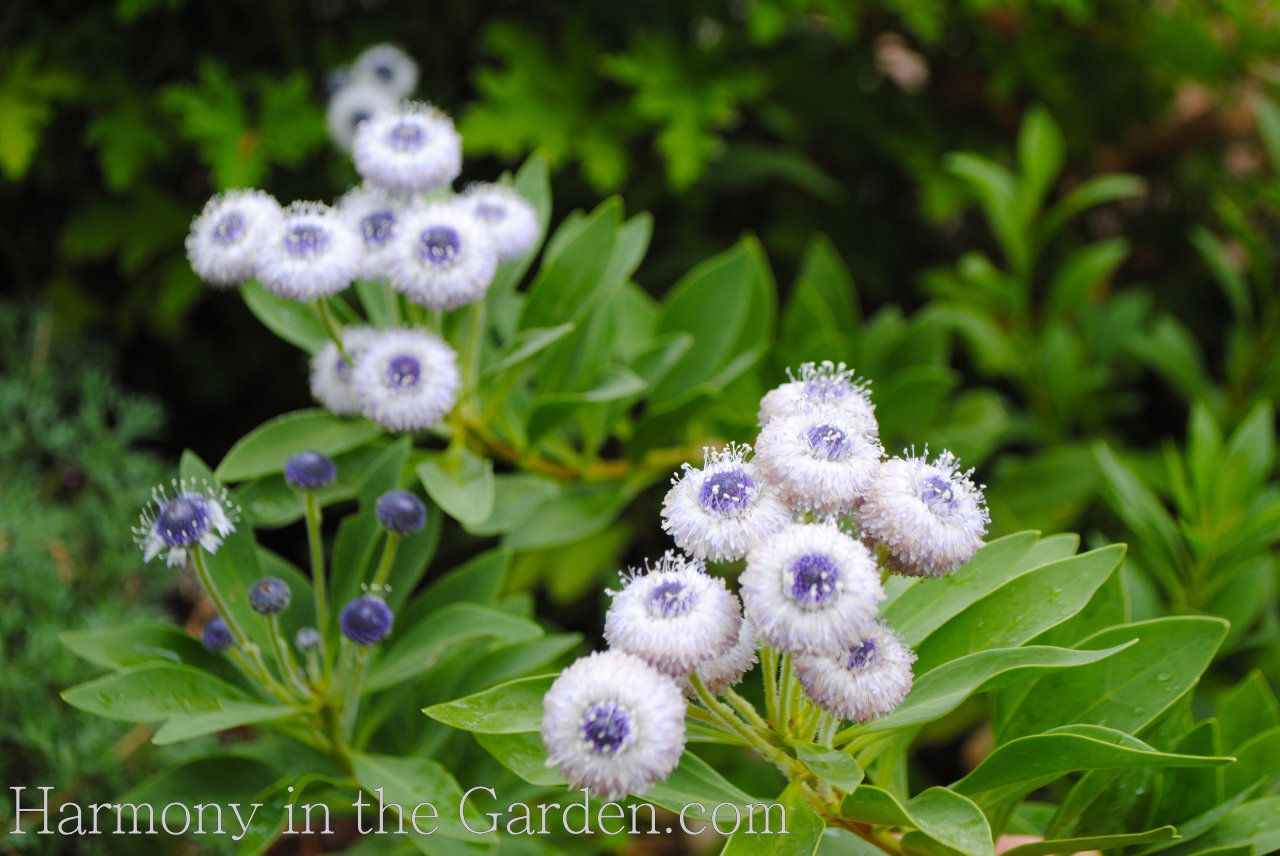

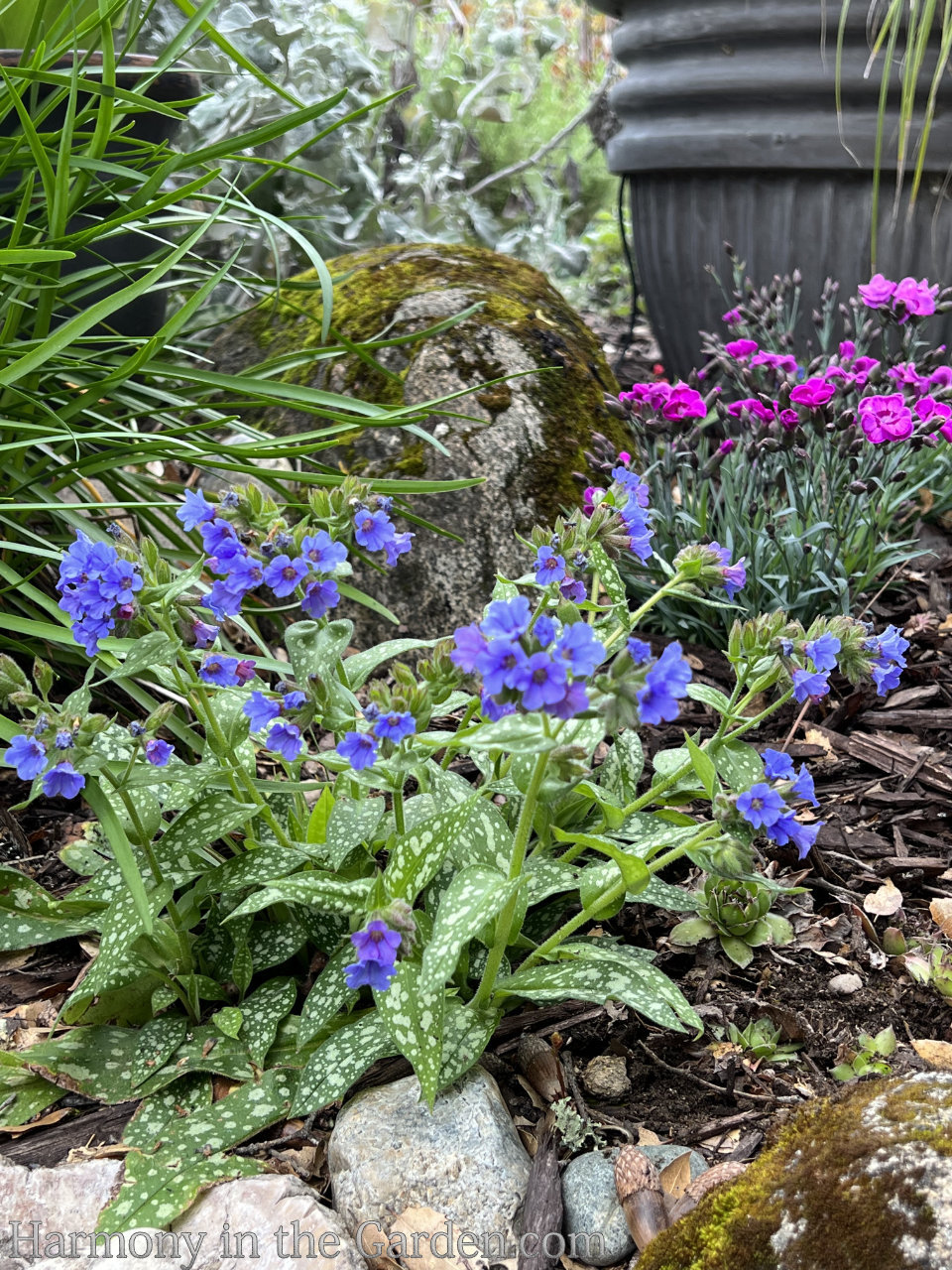

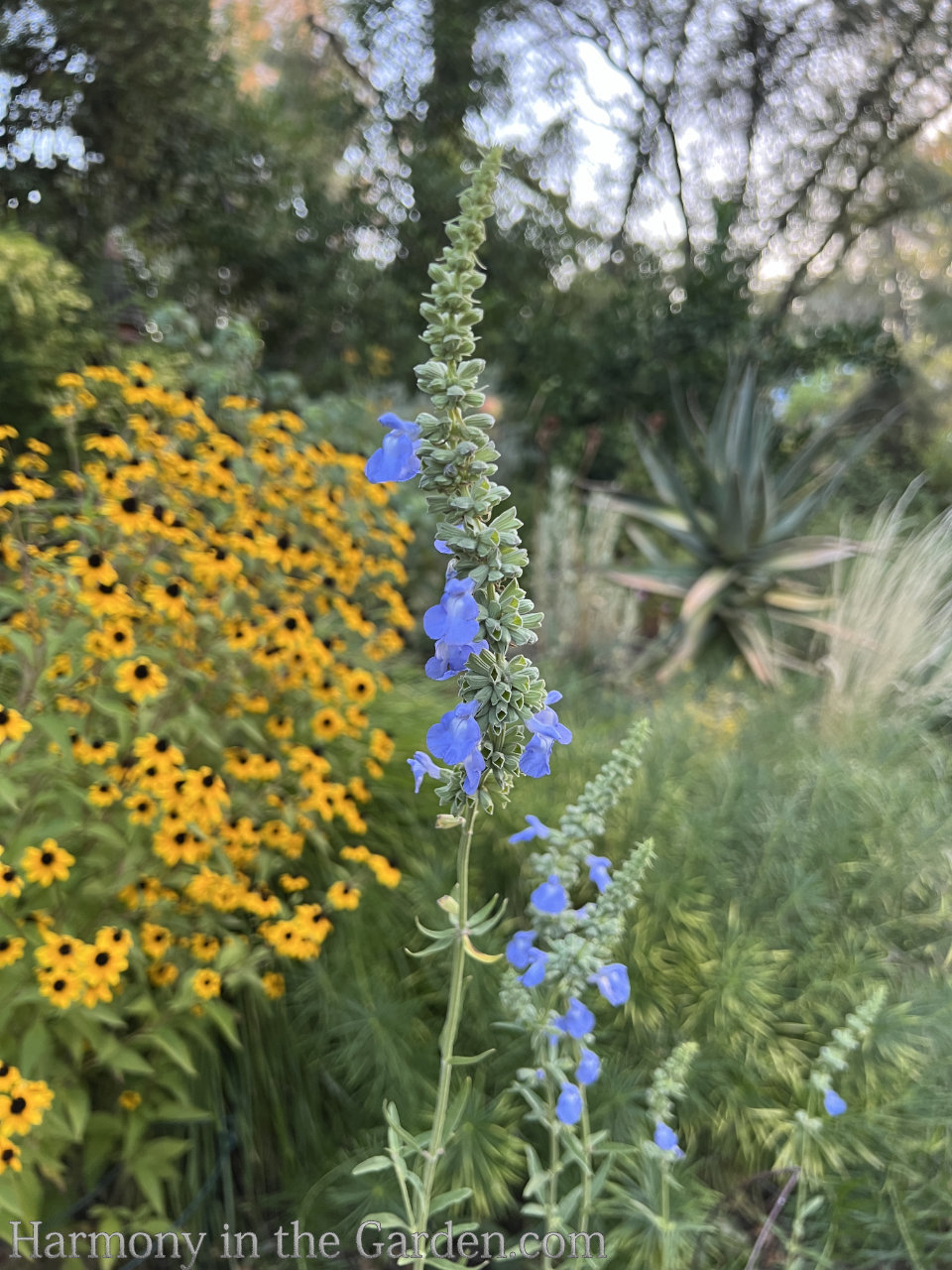



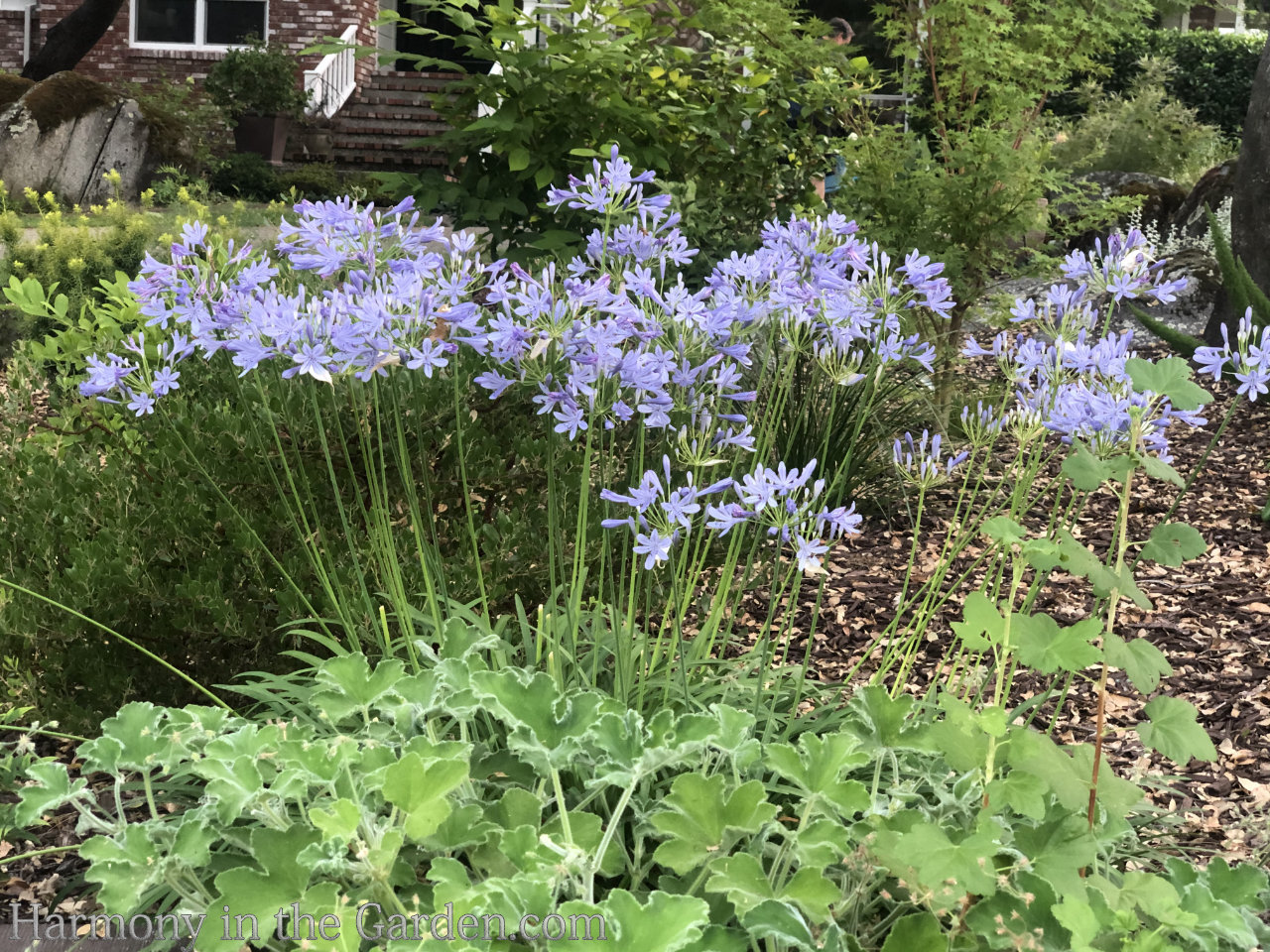


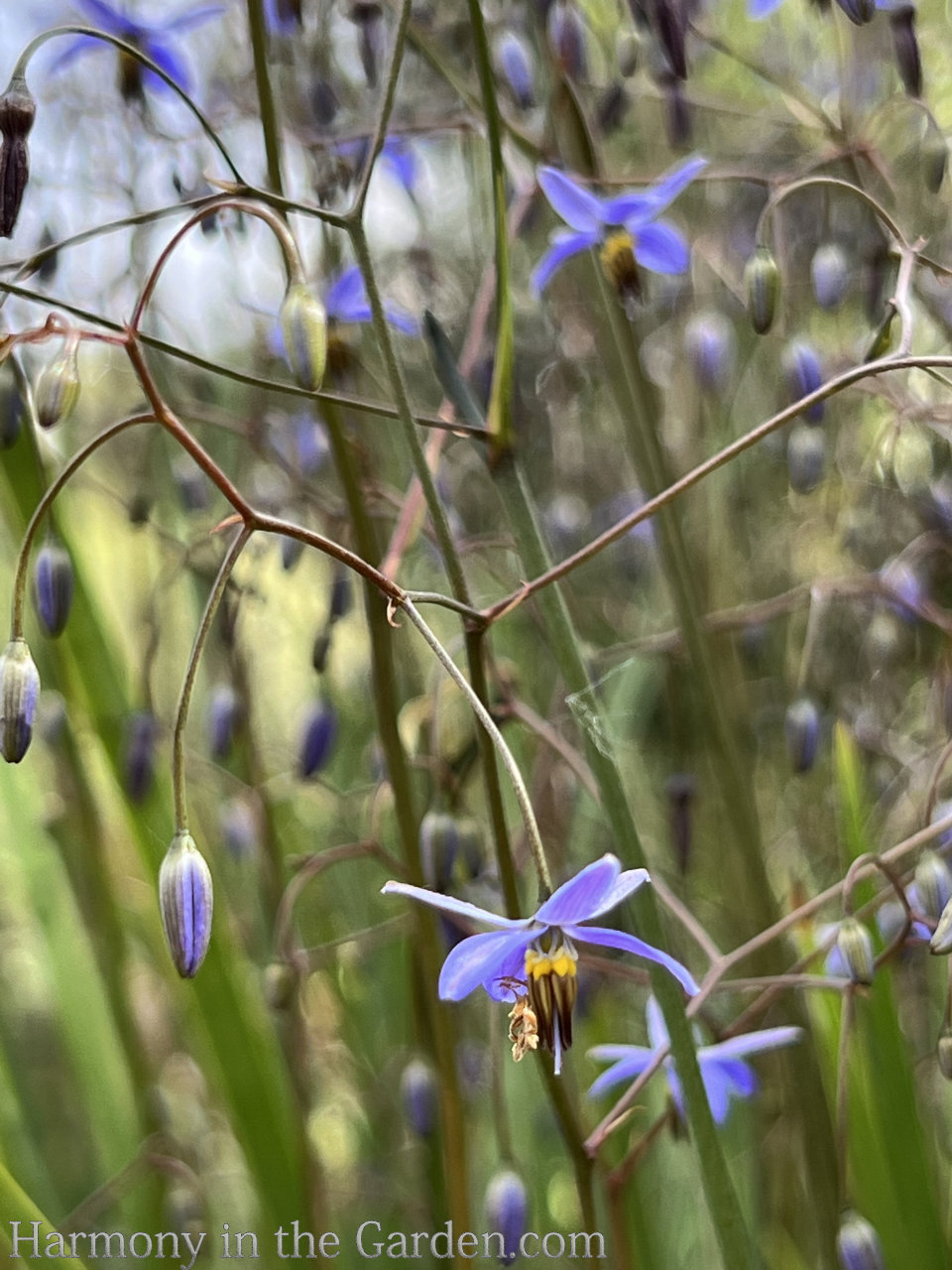
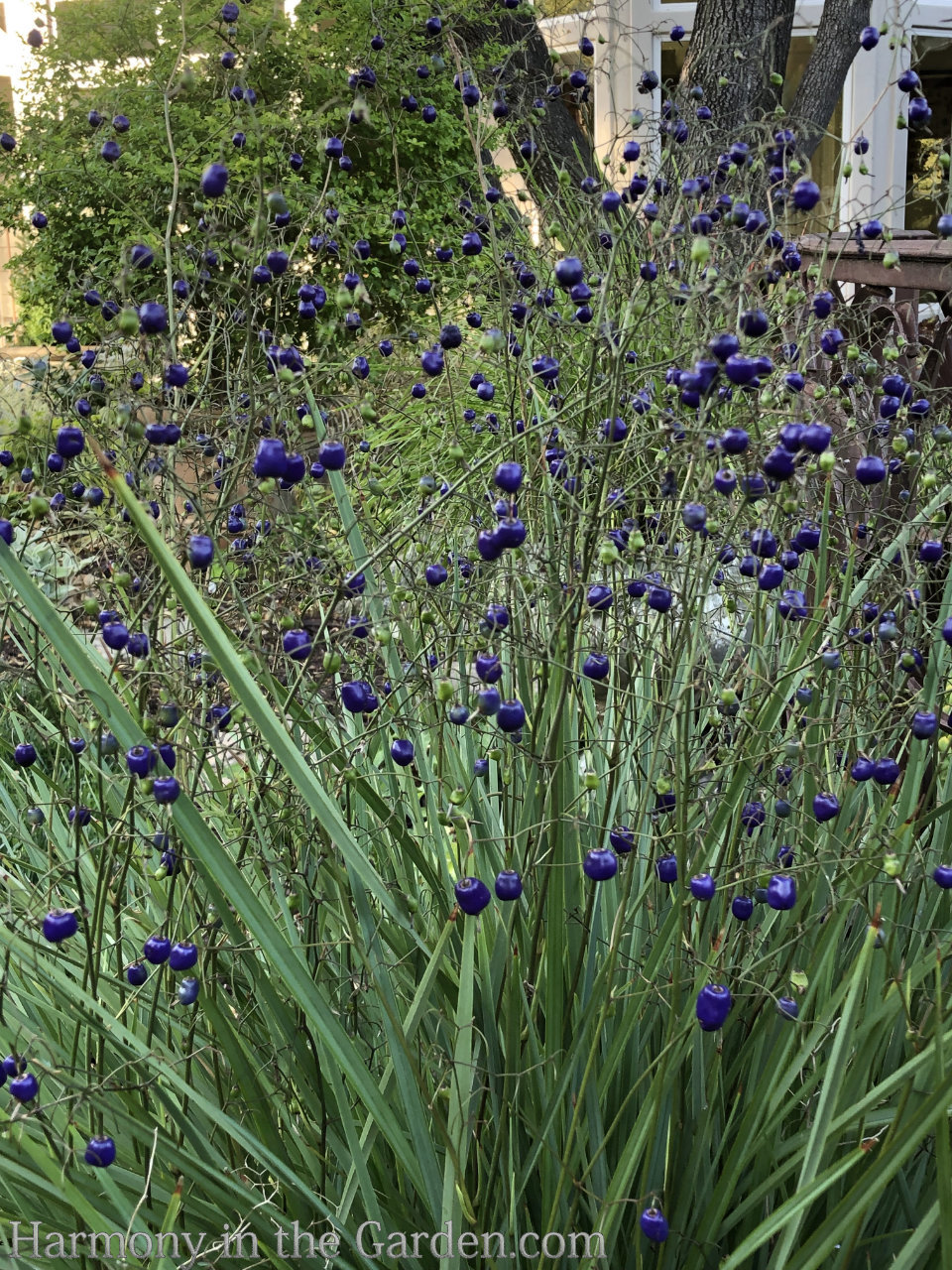
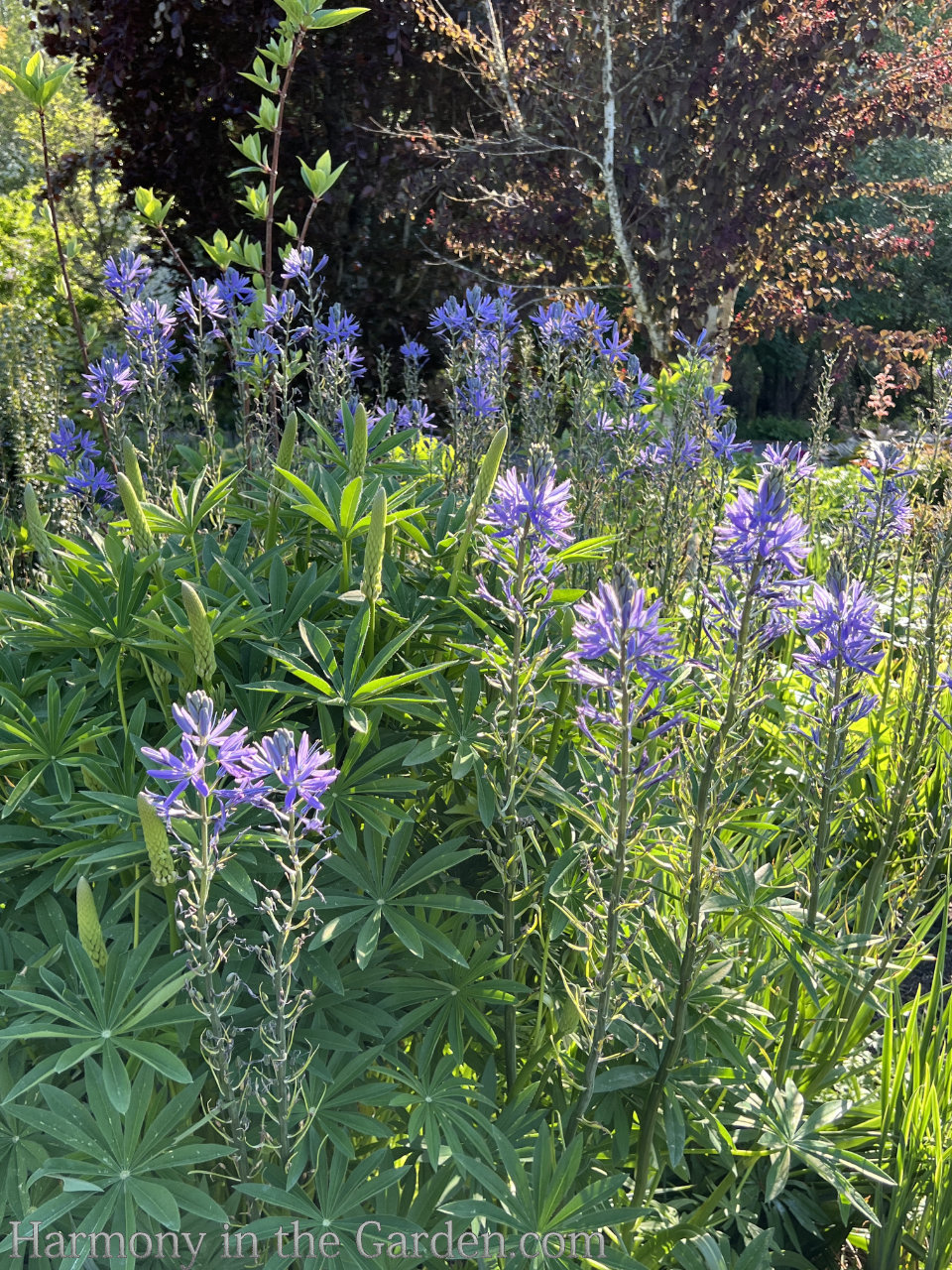
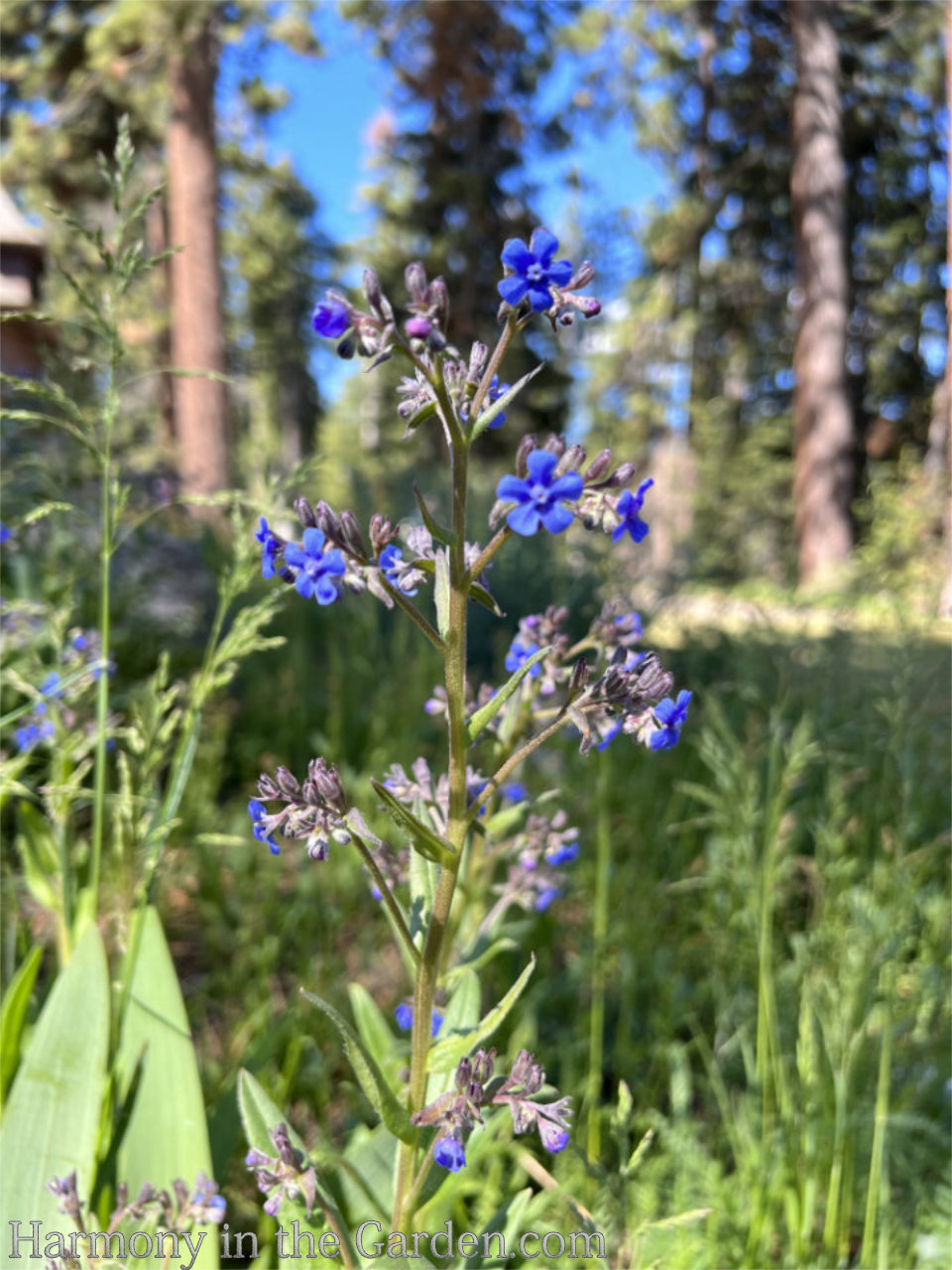

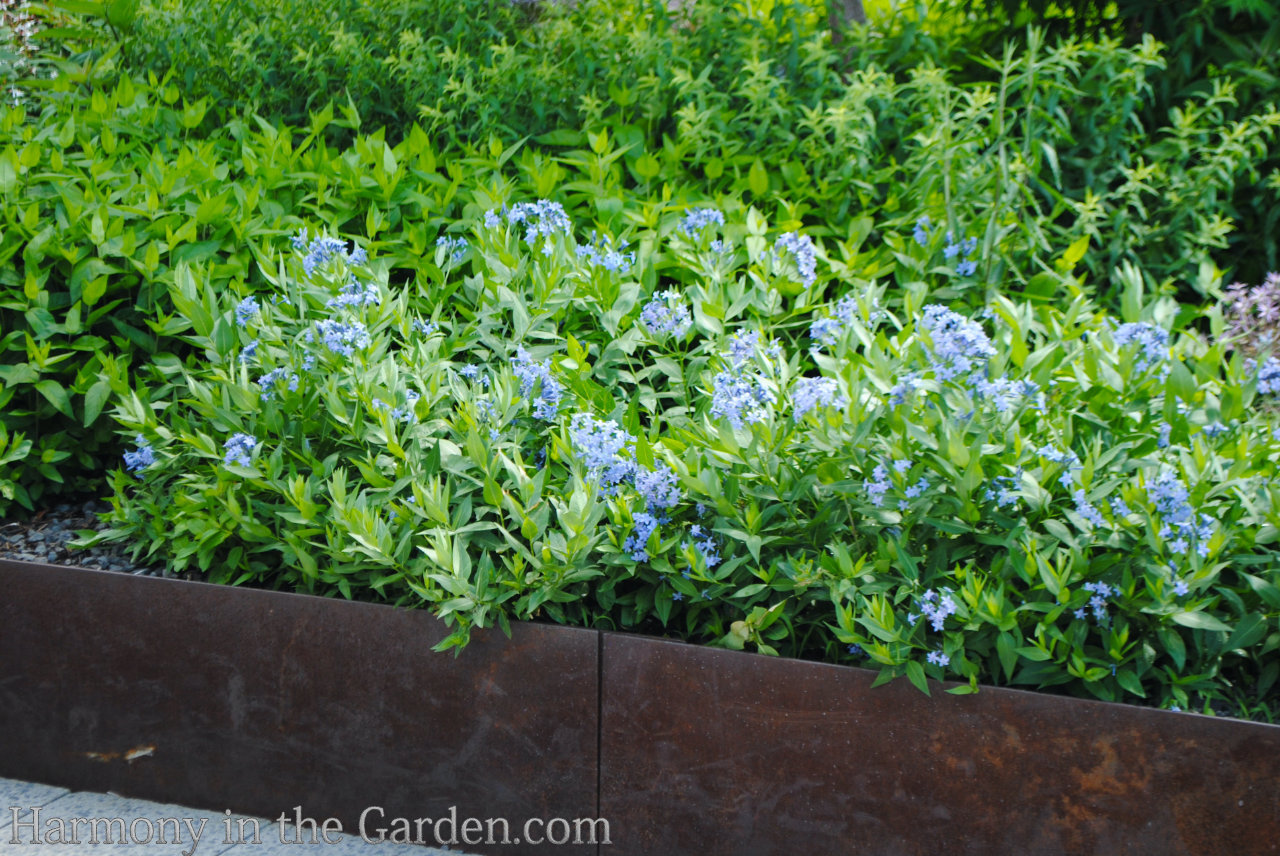
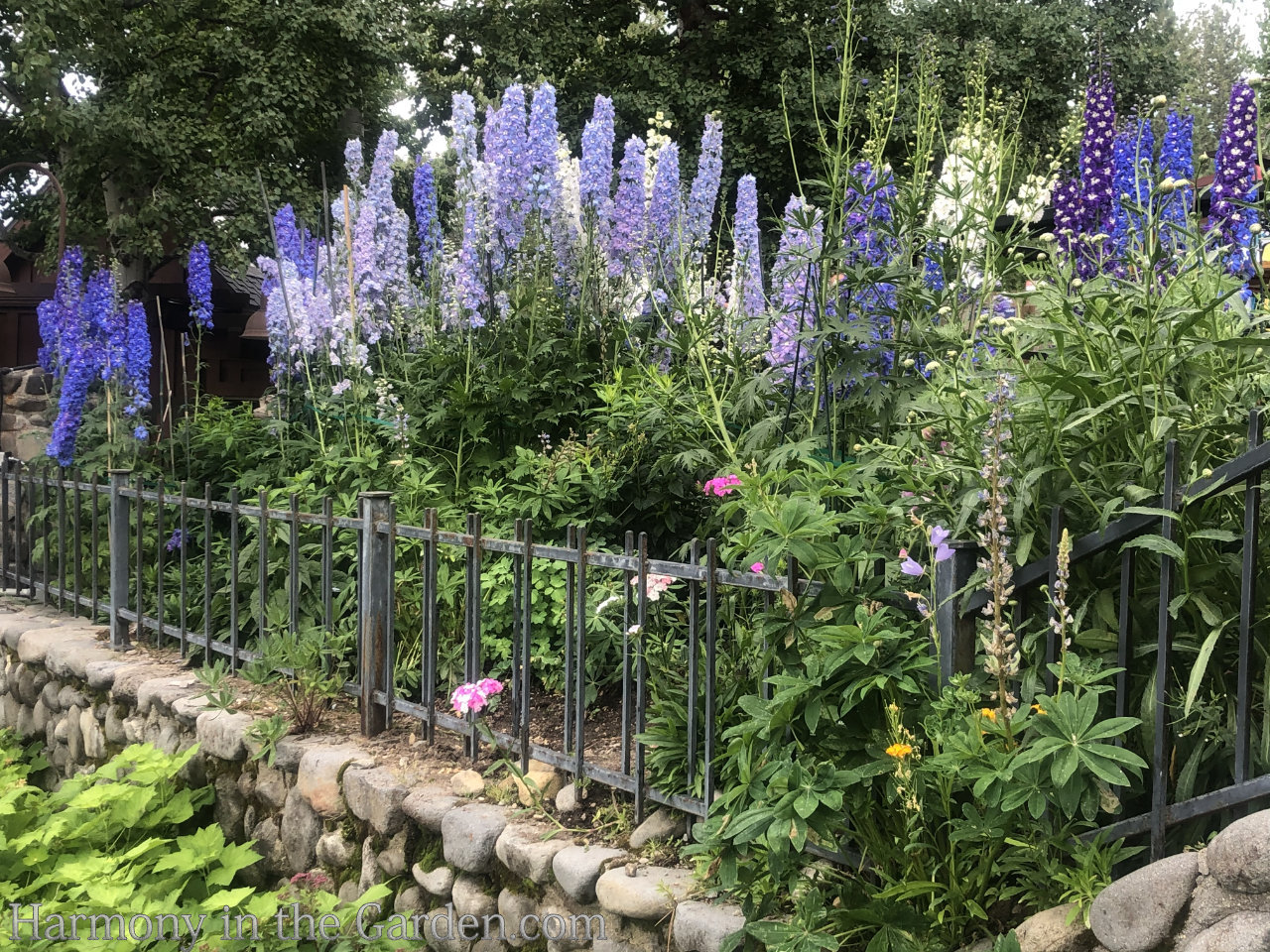
Whew, what a list (though I realize I’ve only scratched the surface of fabulous sources of blue for the garden.)
Have any favorites that I’ve left out?
Please share!
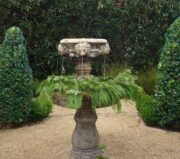
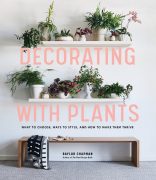




11 Comments
Hi Rebecca,
On the page, “Glaucous & Purple,,” under Whats Analogous Mean, what is the maroon plant in among the Senecio?
It add much needed interest to the grey Senecio.
Thanks
Hi Judy, The little purple flower is a common sweet alyssum, nothing fancy but boy are they cute! Especially when next to that beautiful blue senecio.
Thank you Rebecca. I thought it might be a low growing, more drought tolerant Phlox.
Thanks so much! Your thinking of this through and your great ‘eye’ makes for a great blog!
Thank you, Jenny!
I have a Germander shrub, “Azureum”, I believe. It’s planted in front of my purple smoke bush, which is quite large.. Each of these shrubs on their own are great, but I especially love them together. And as autumn settles in and the smoke bush begins to turn, it’s just beautiful.
Hi Lela, I bet your two shrubs look fantastic together! Maroon and blue is one of my favorite color combinations (similar to the plumbago and Ninebark photo I included) – I’ll have to remember your combo as I also have a germander and smoke bush but they’re not planted near one another. Hmmm…I see a little transplanting in my future. 😉
The Bluebeard shrub (Caryopteris) is definitely worth mentioning. It’s a great, low-care, late-blooming plant loved by the bees. It starts to pop just when lots of other flowers are winding down.
You’re absolutely right, Jill! I’m not sure how that escaped the list but I love my caryopteris so much I’m going to have to add in some photos. Thanks for the reminder!
Good Morning! Great article on BLUE Flowers! Always enjoy your information articles with photographic examples!
Thanks Sabrina – your garden has some of the most amazing bursts of blue (your cobalt containers are gorgeous!!)